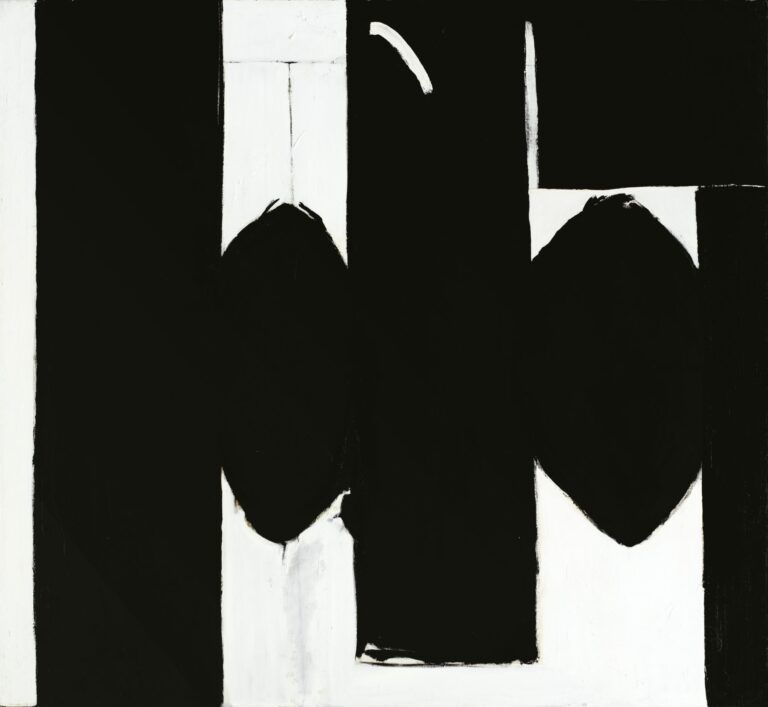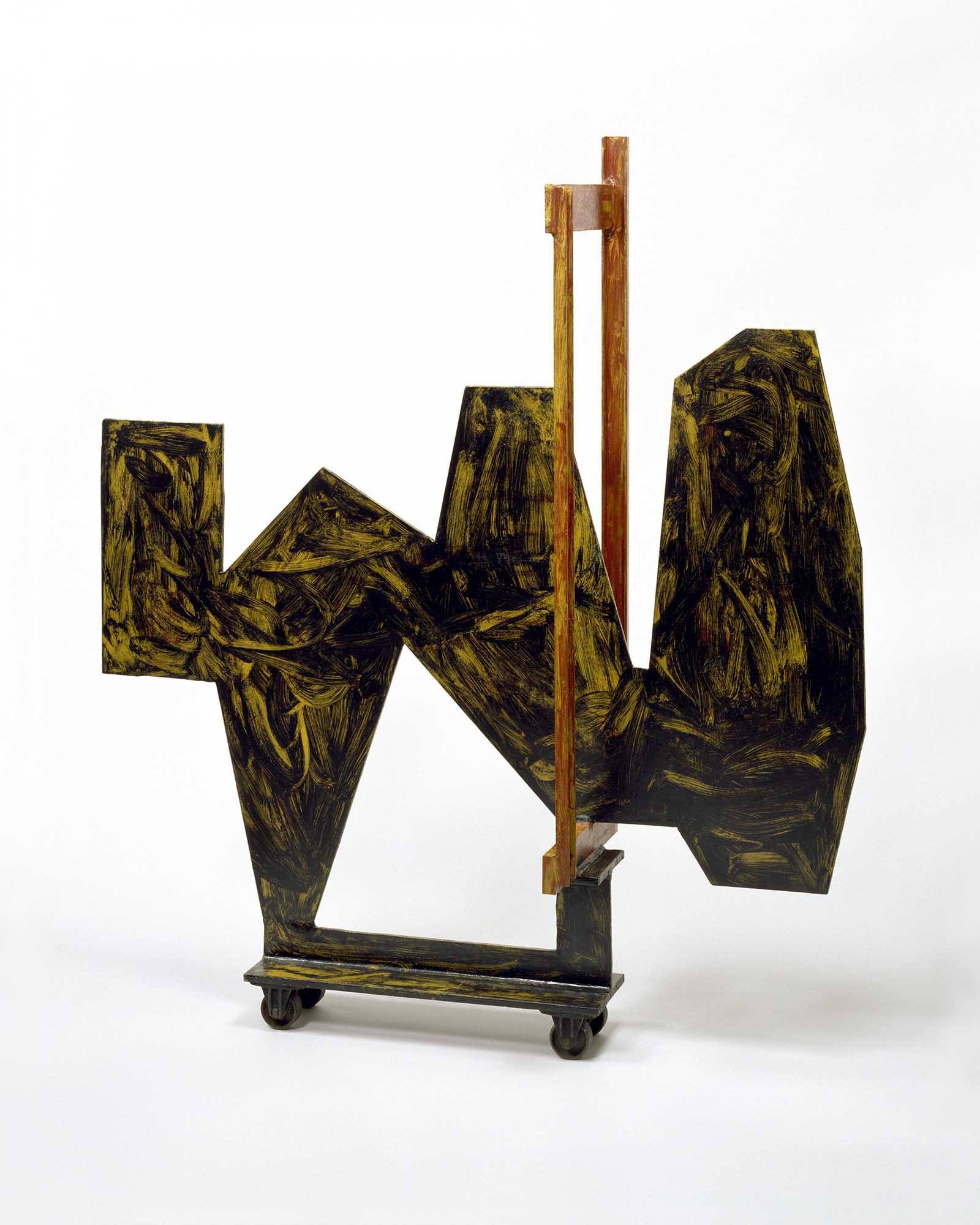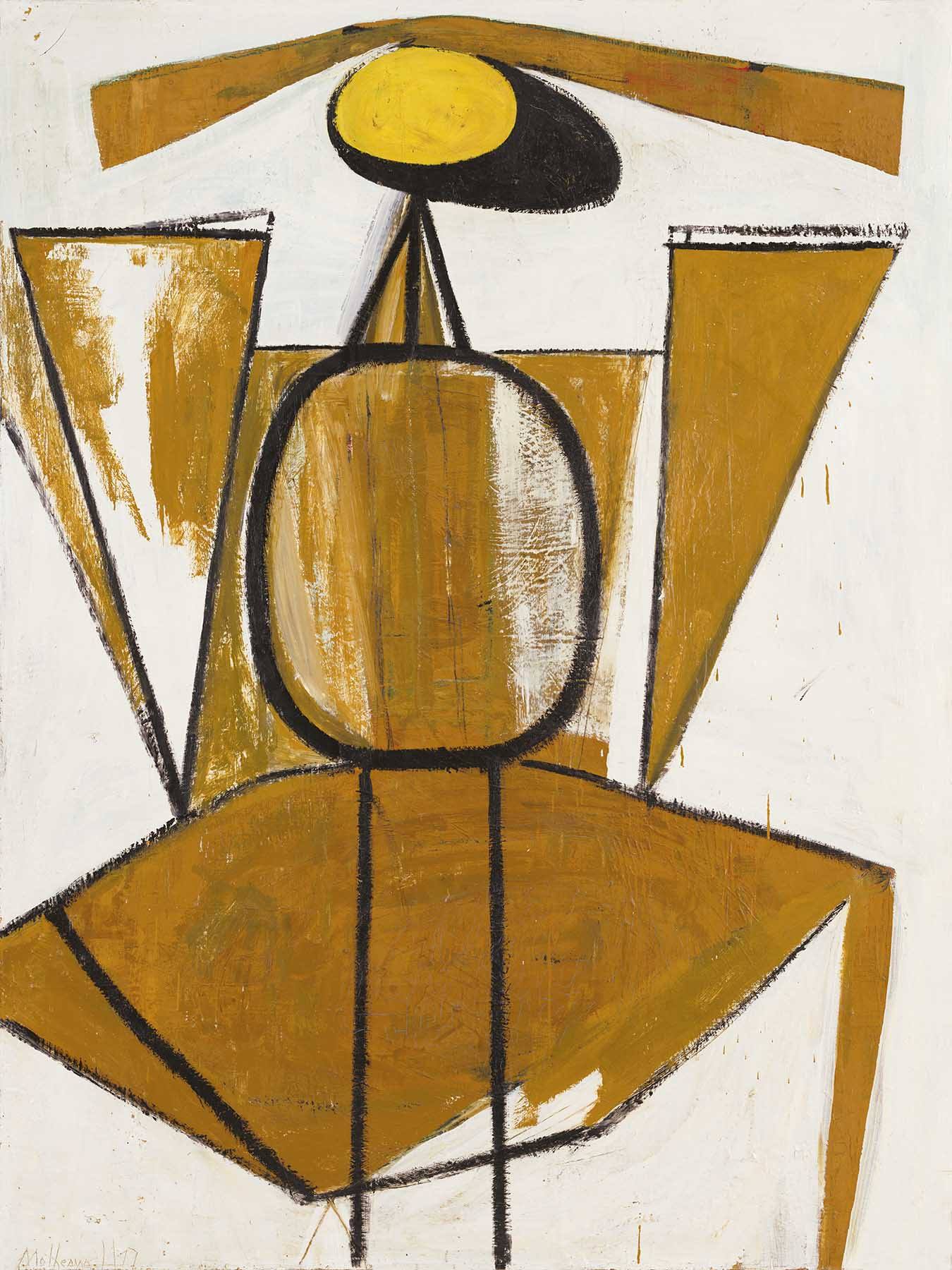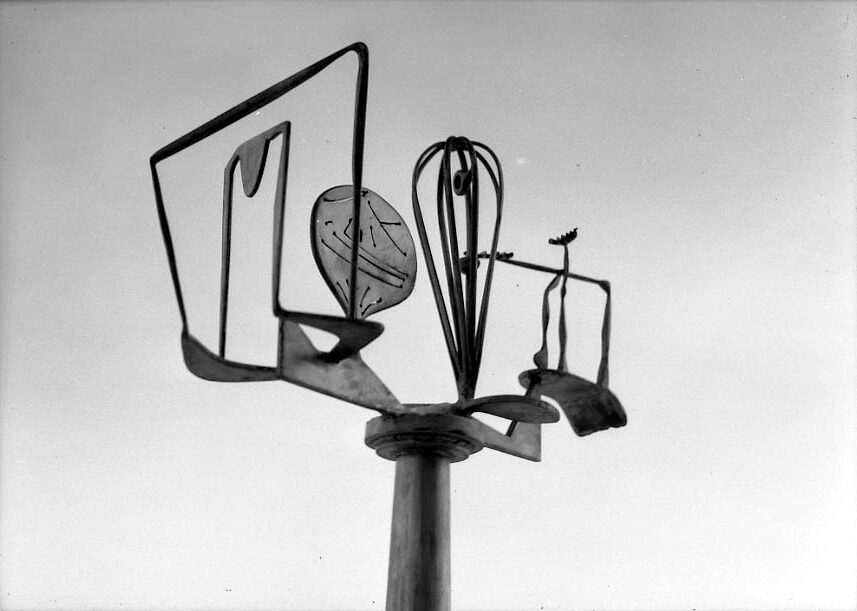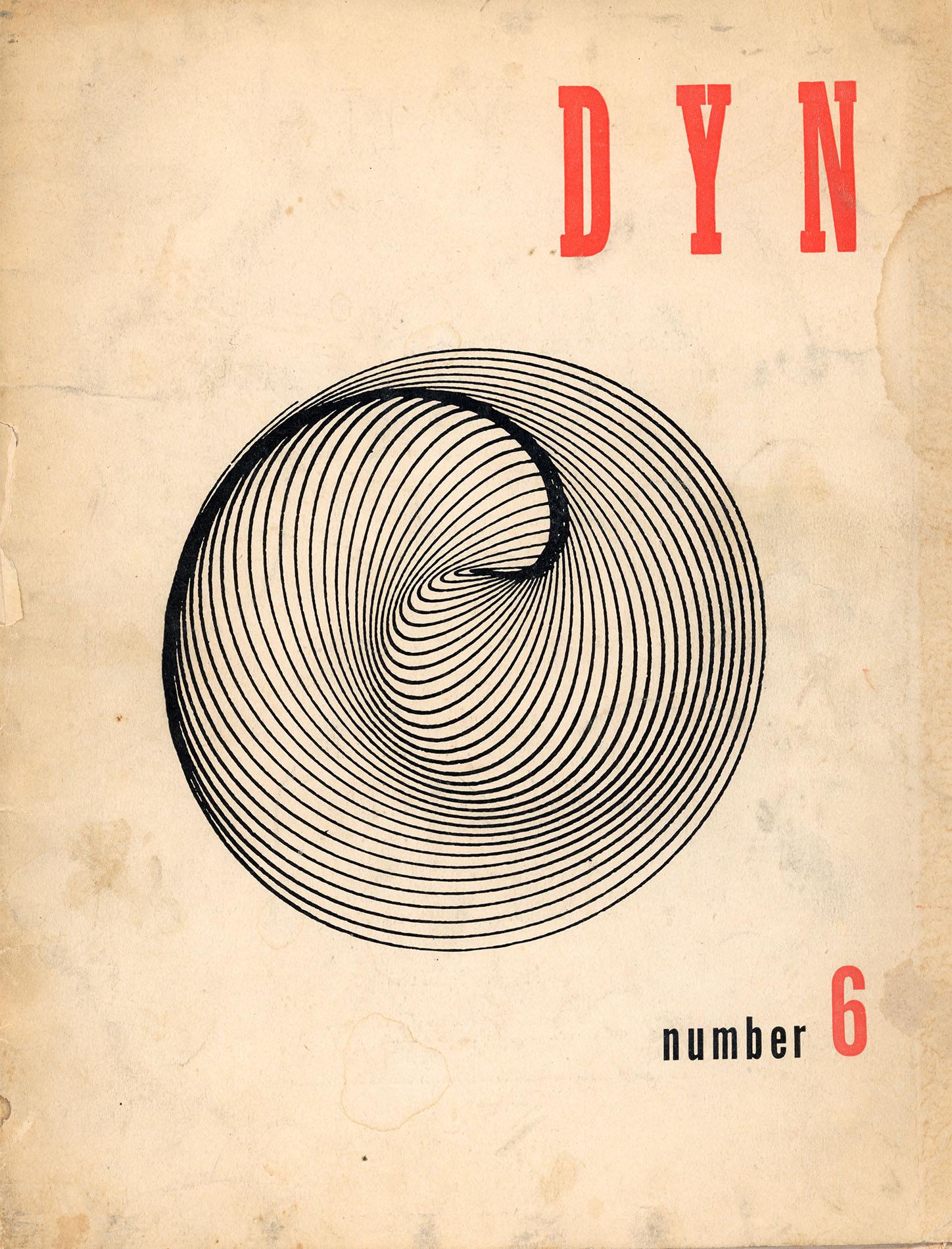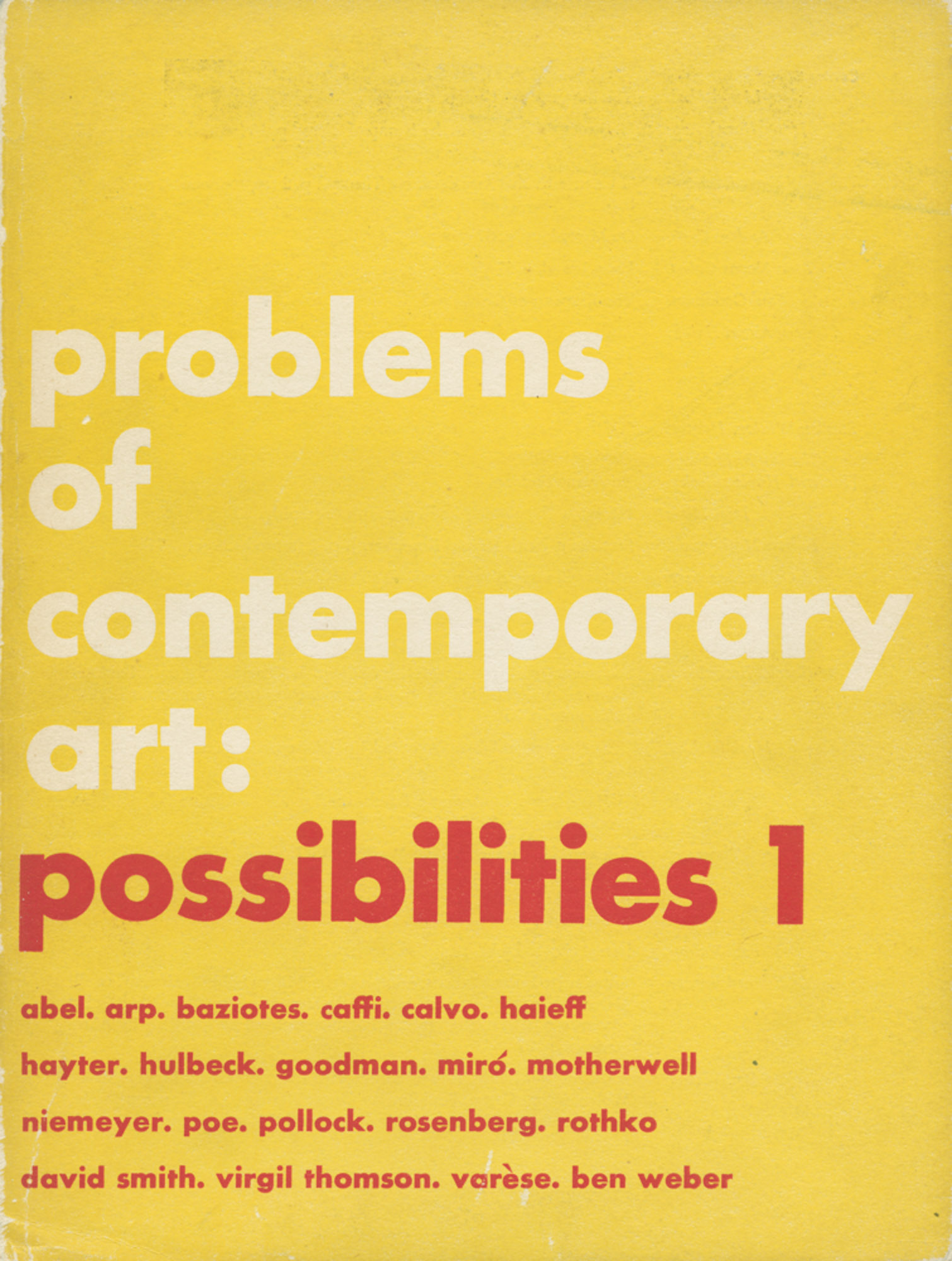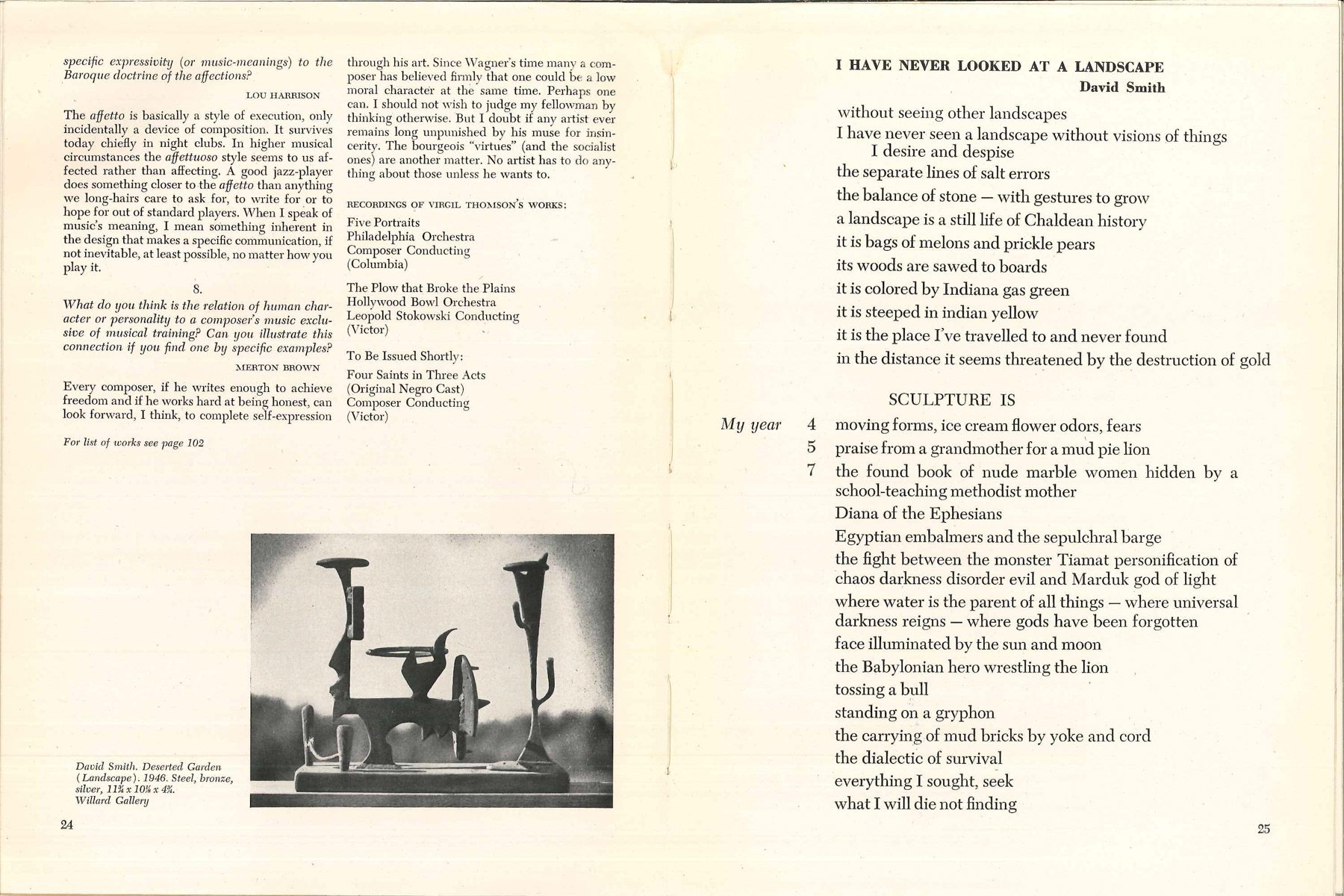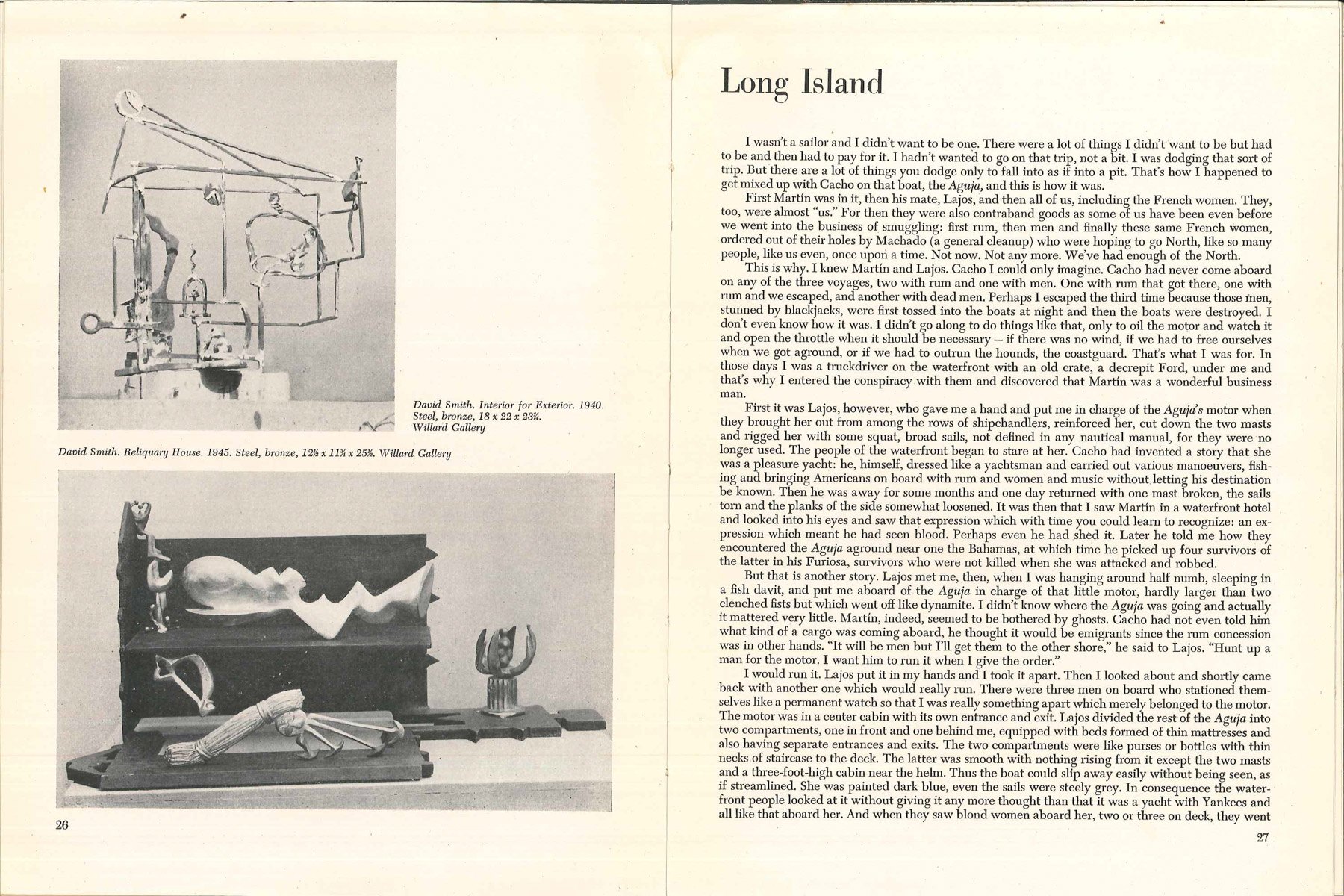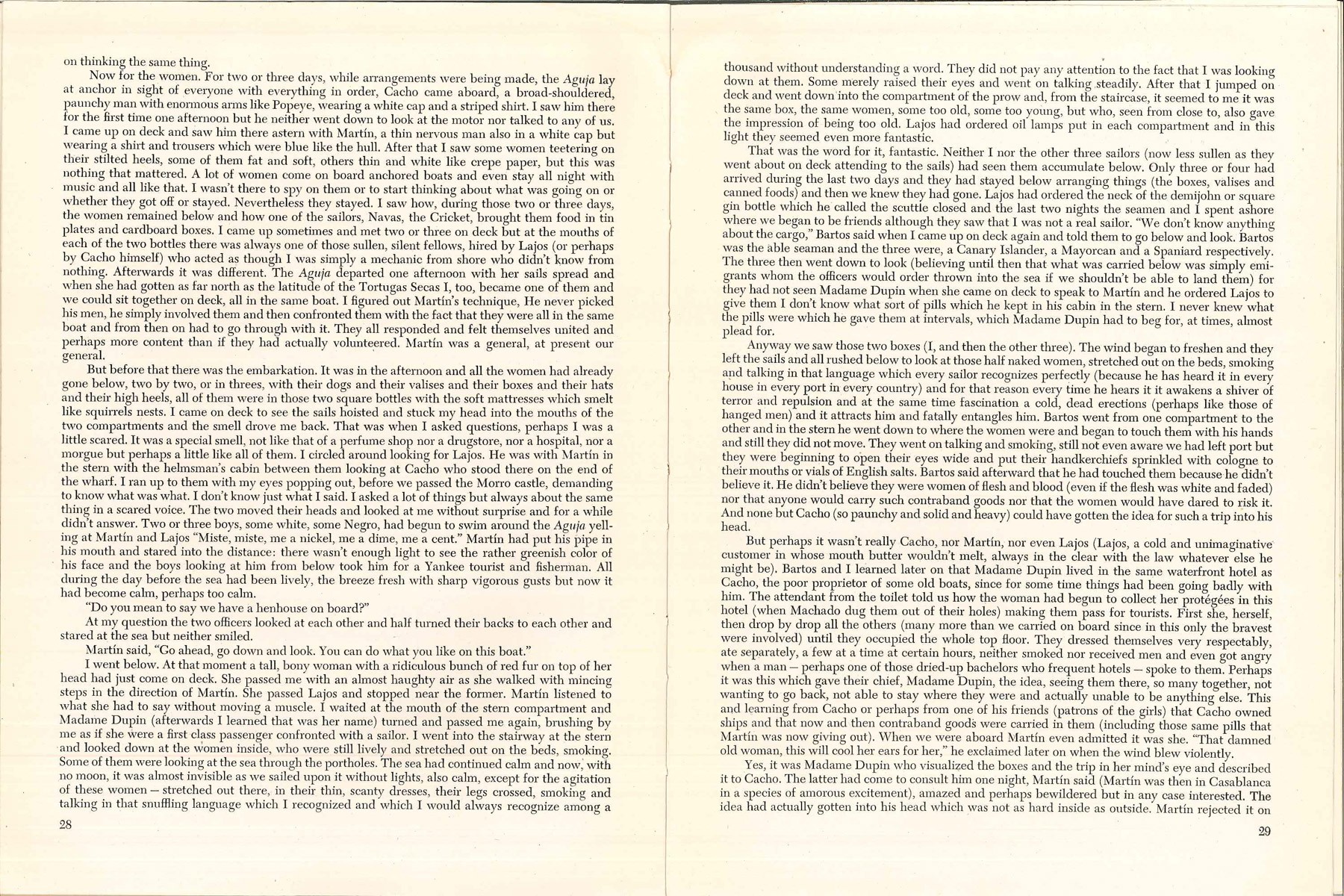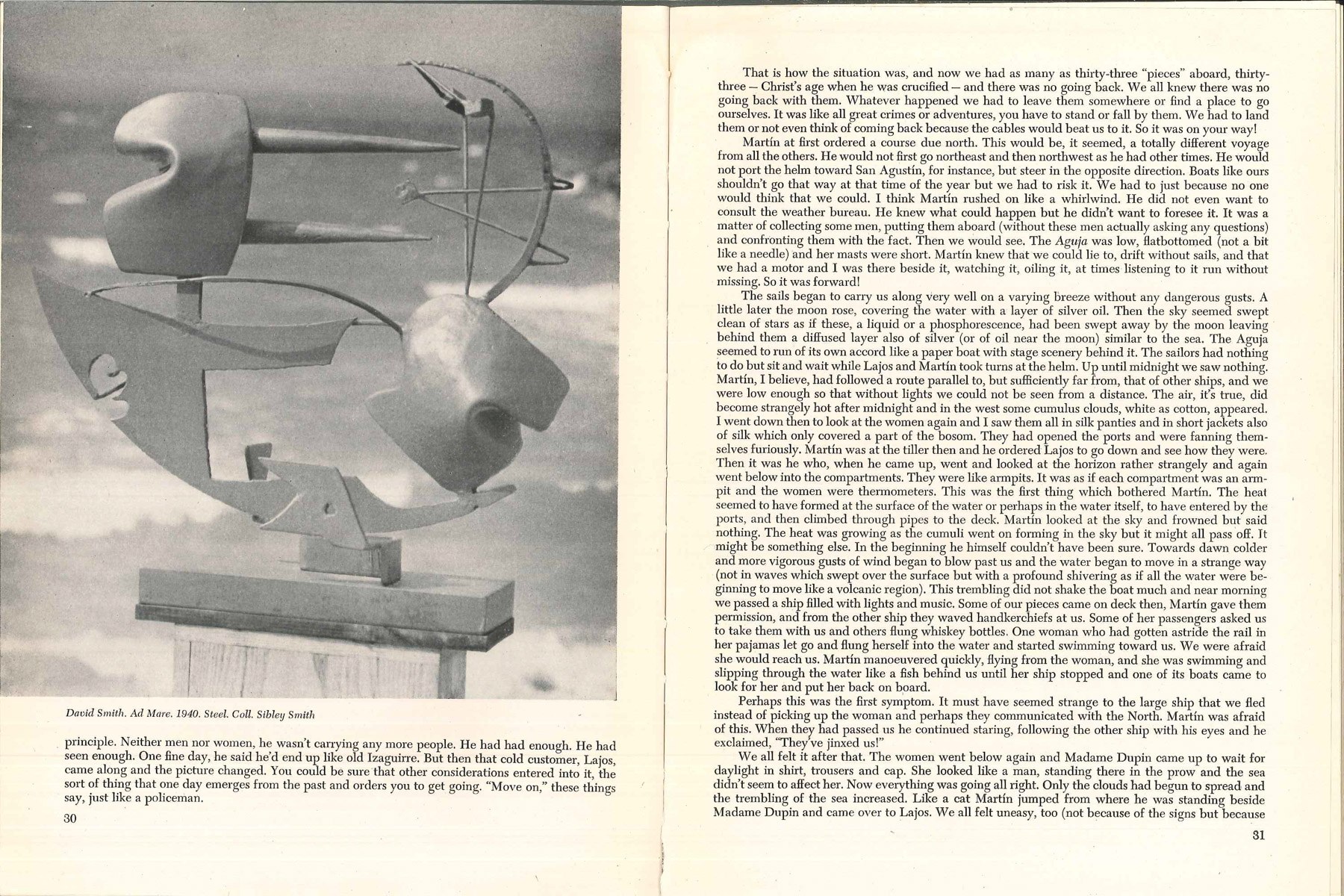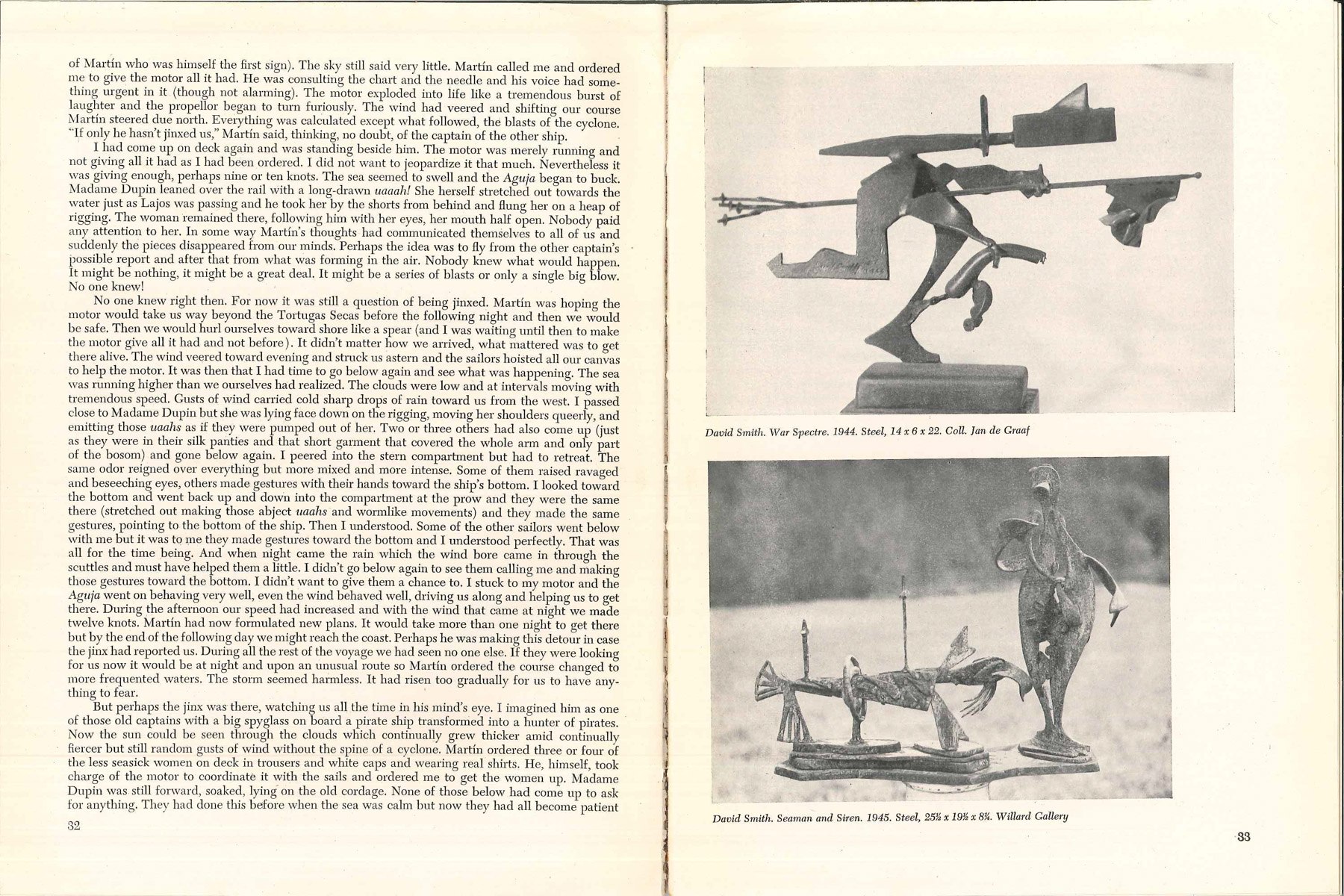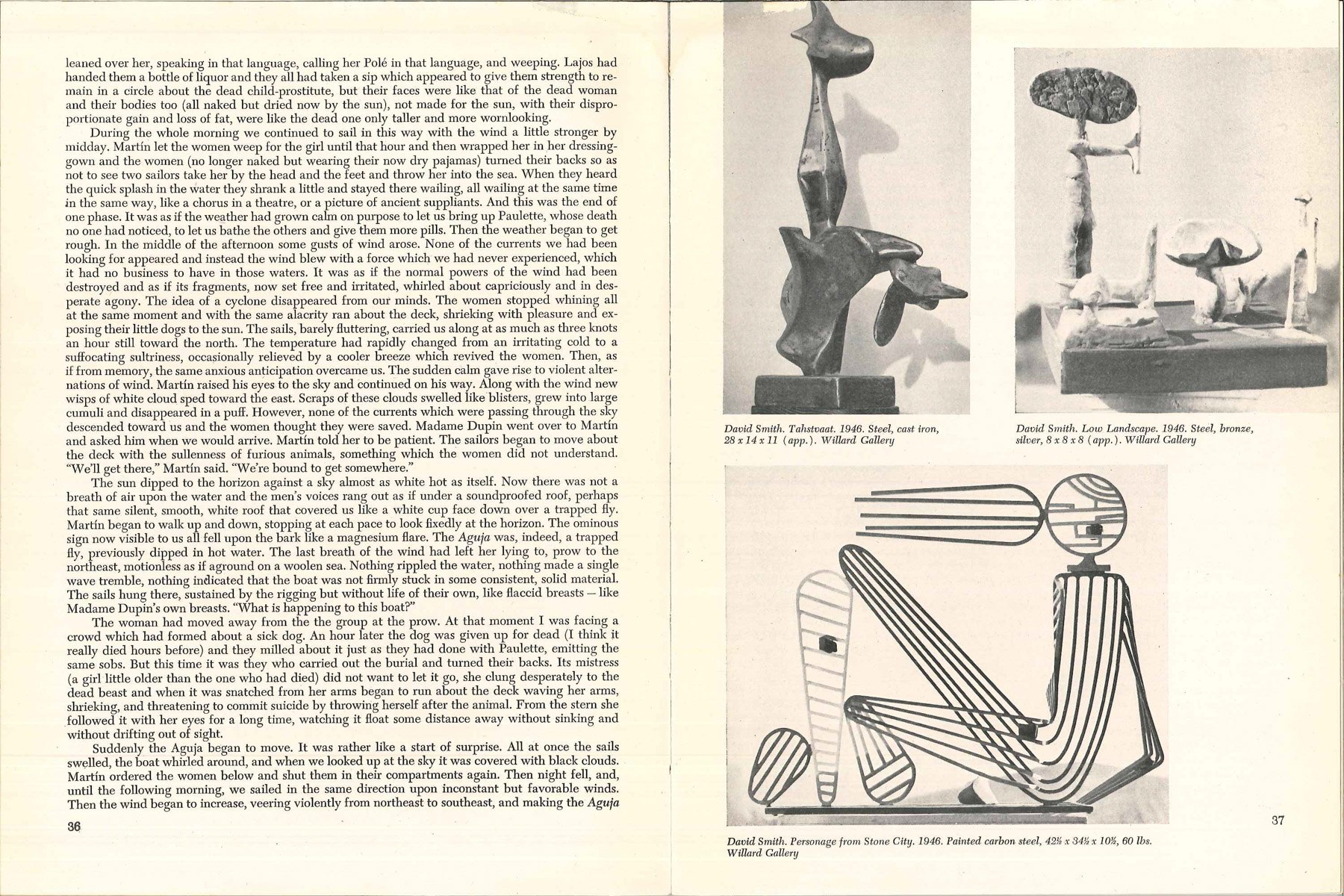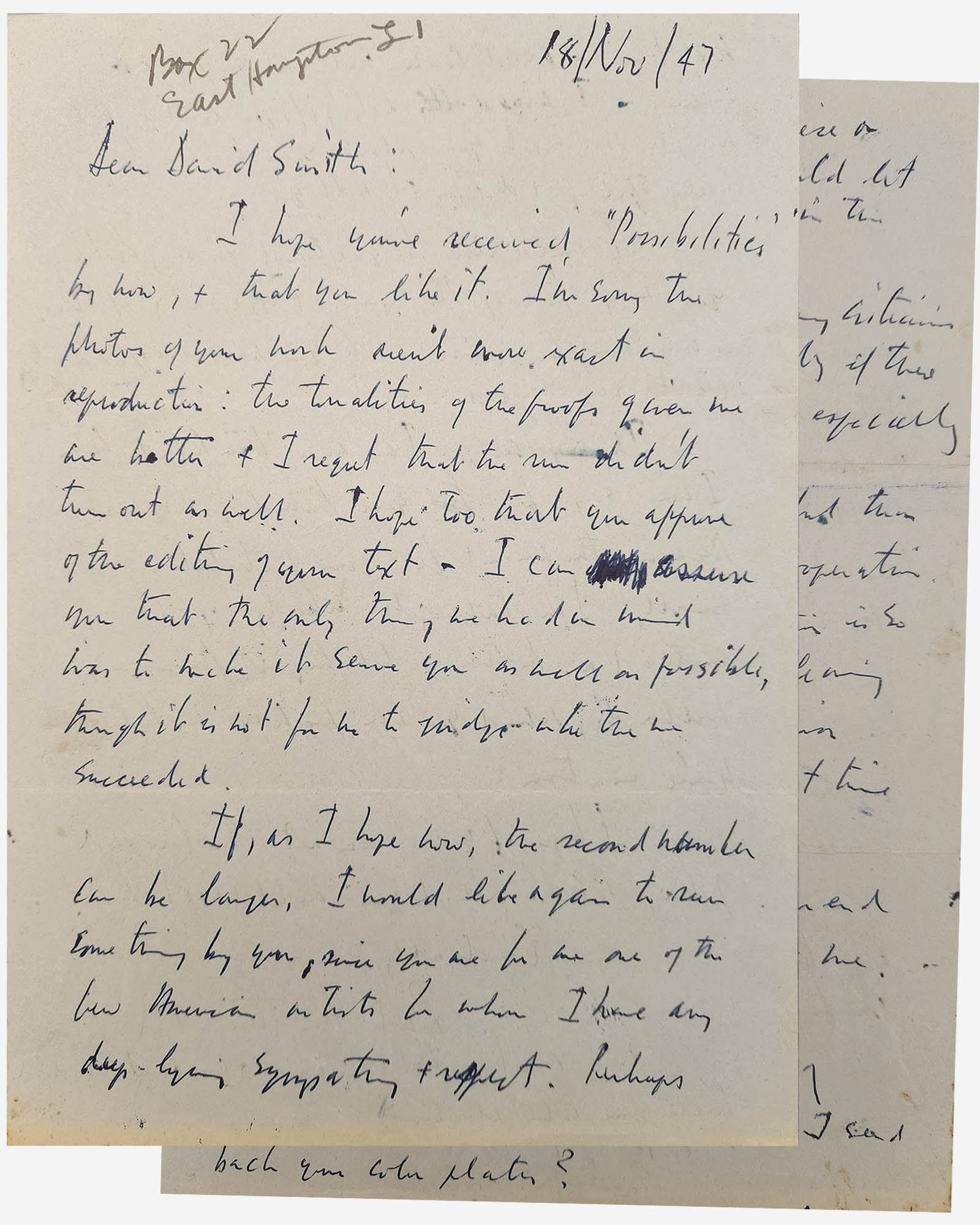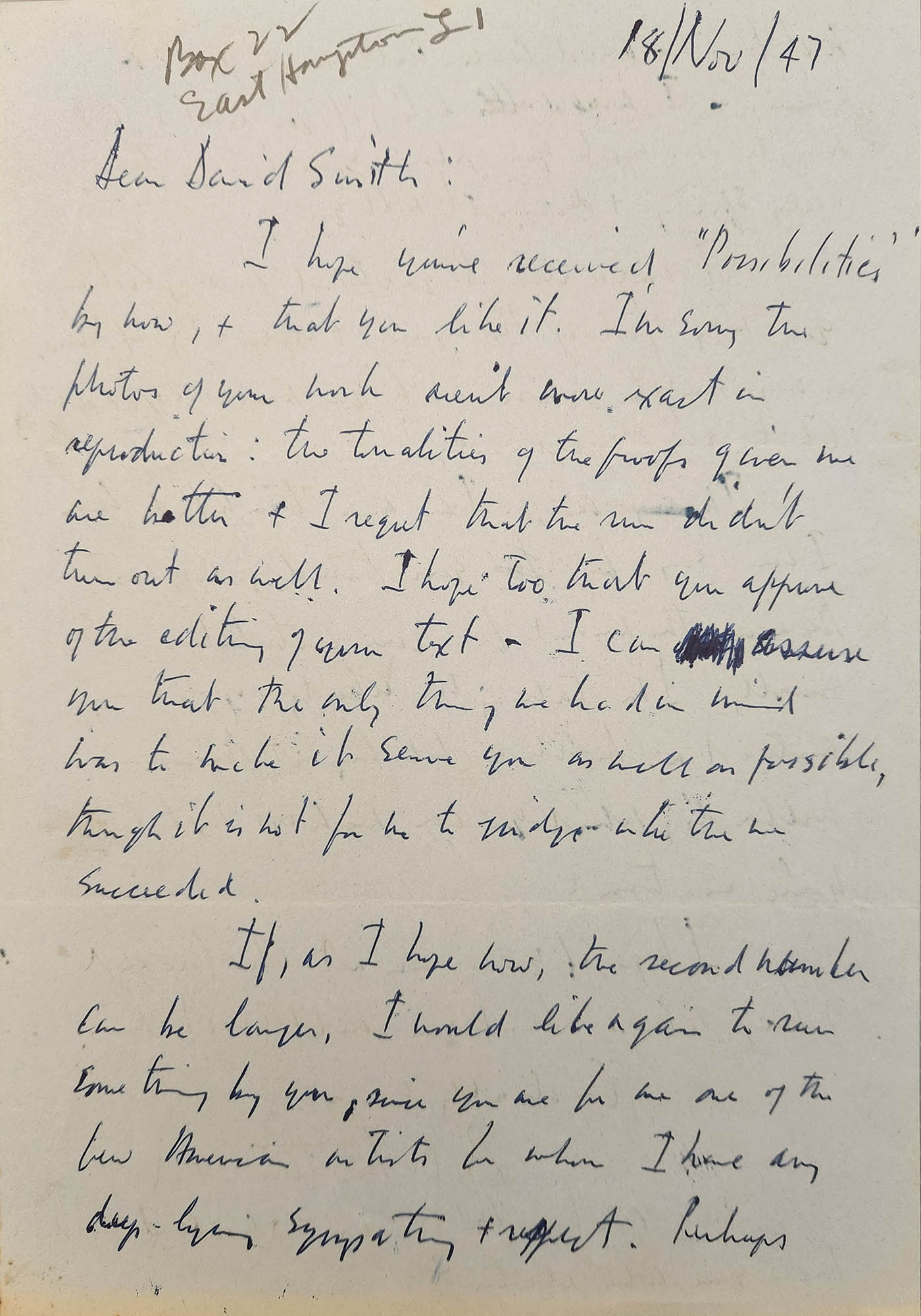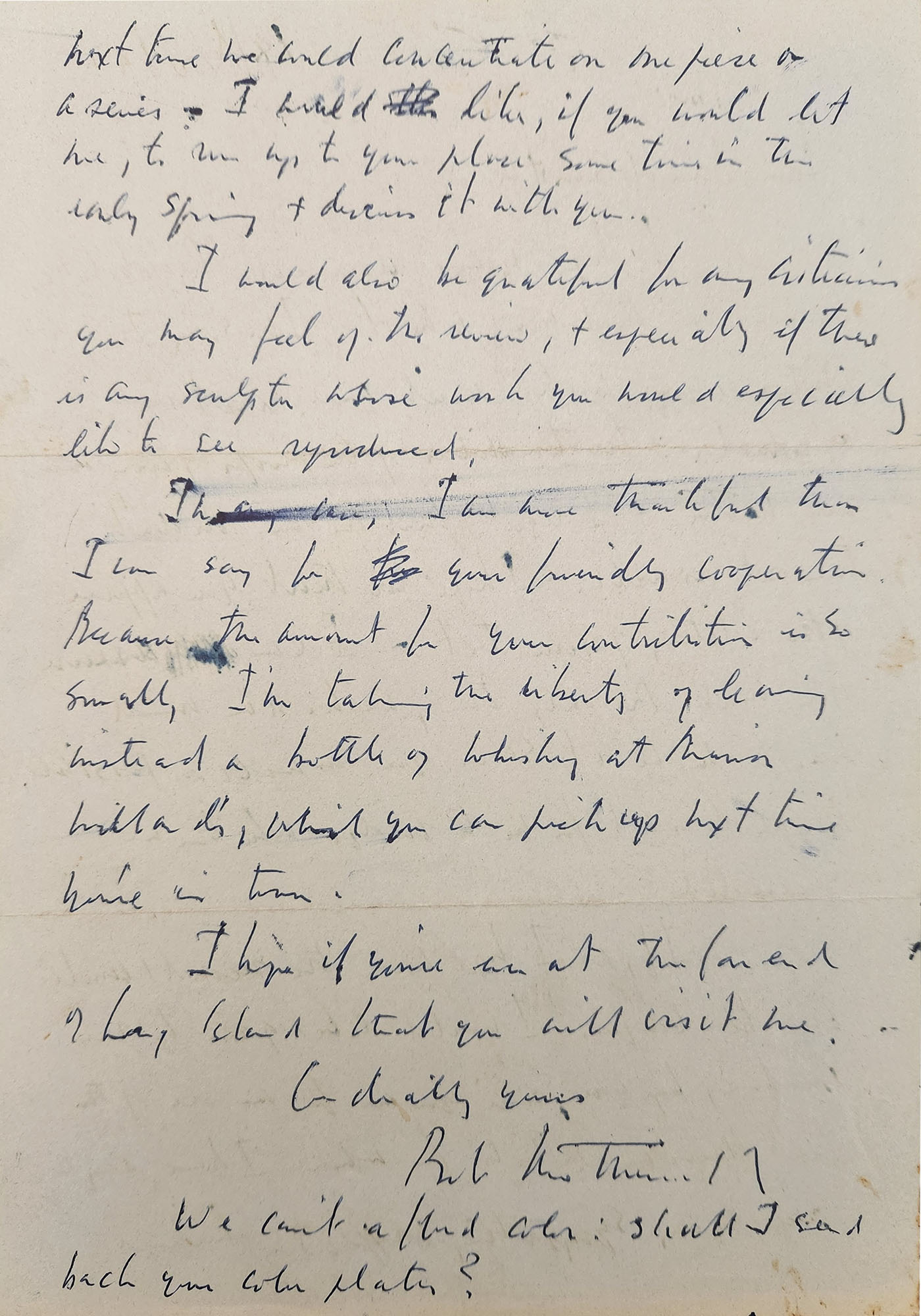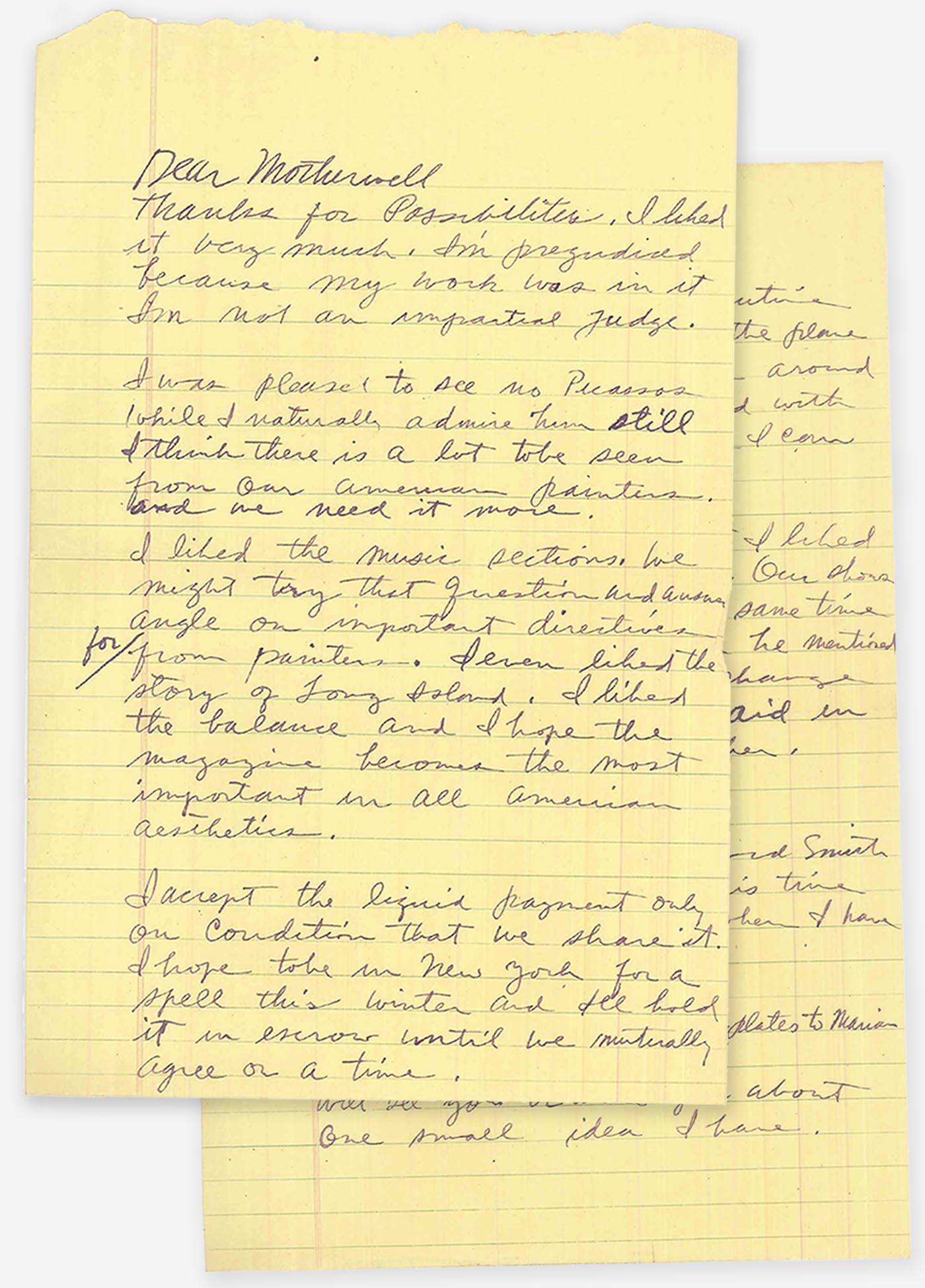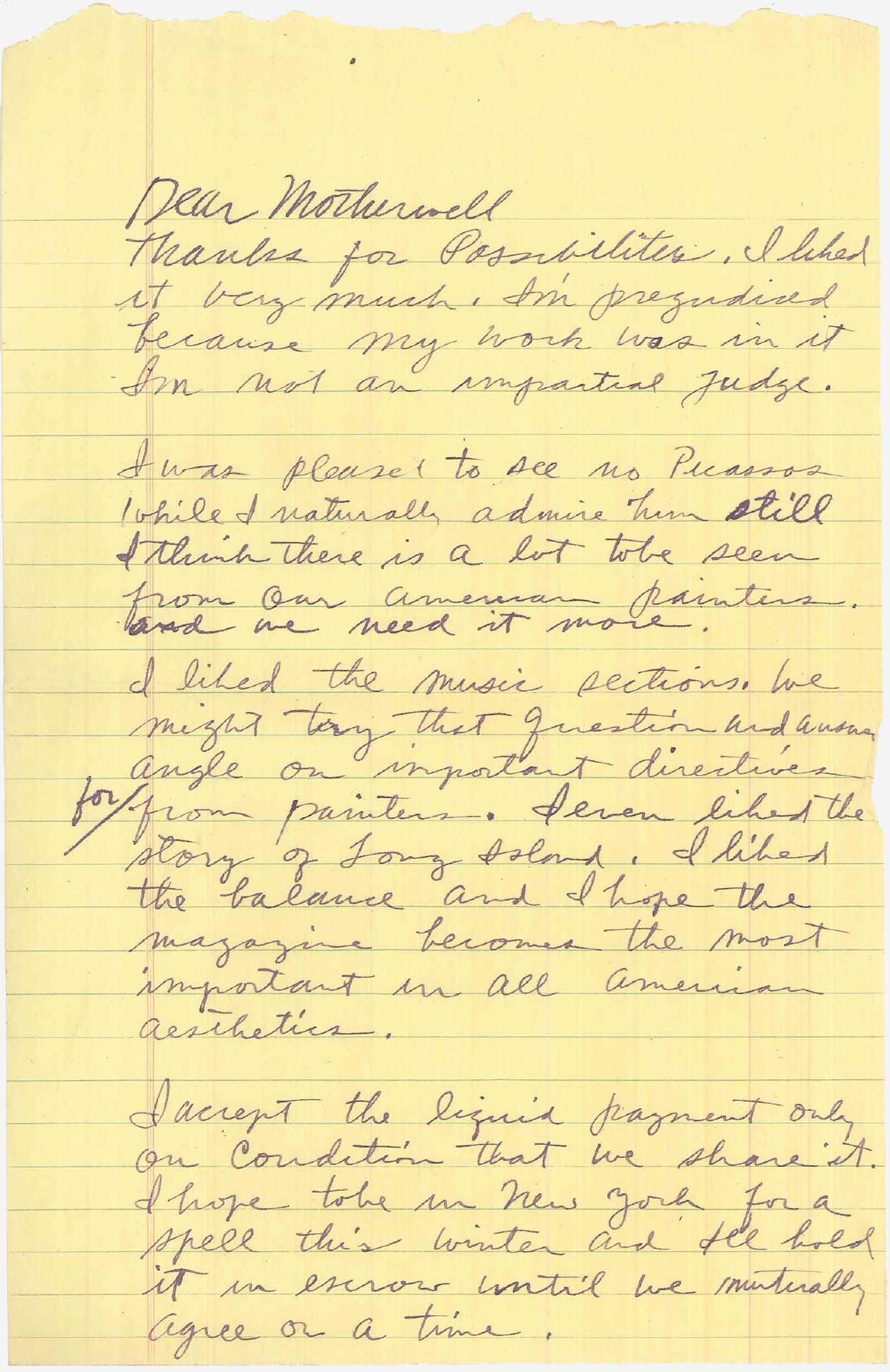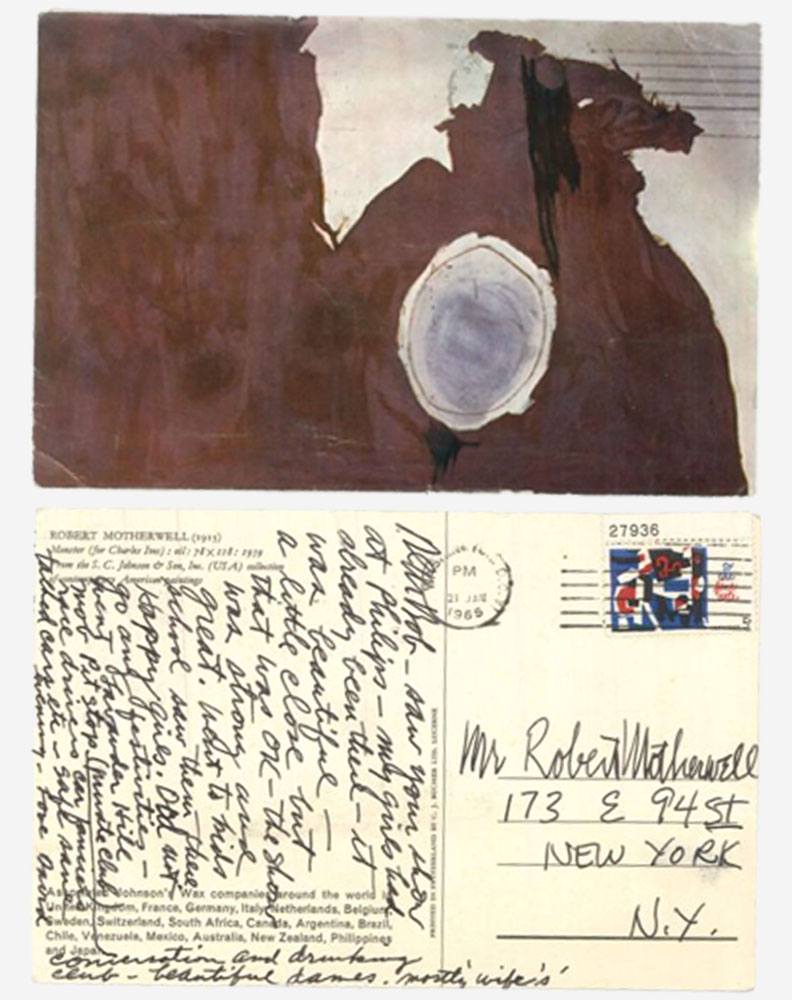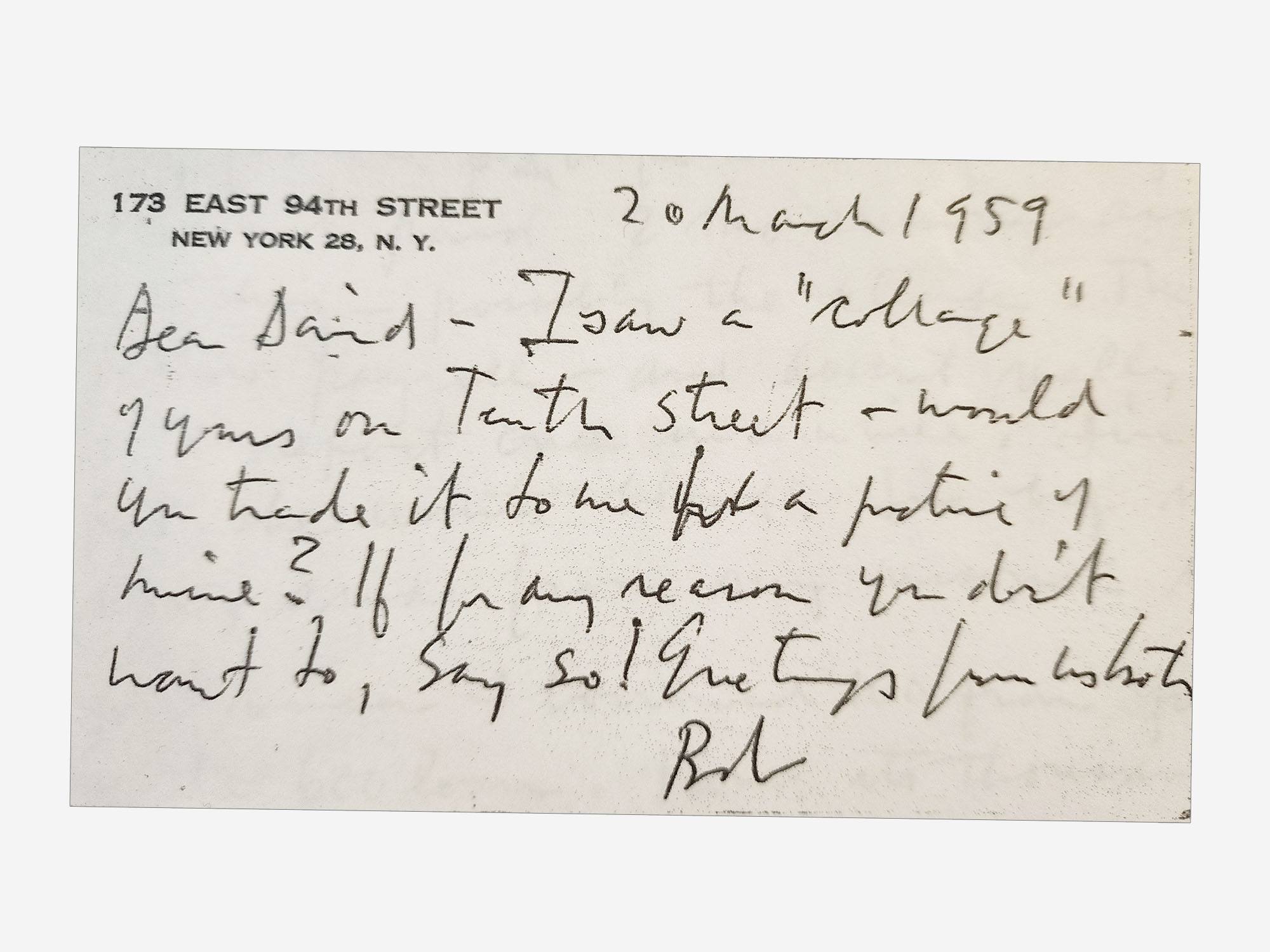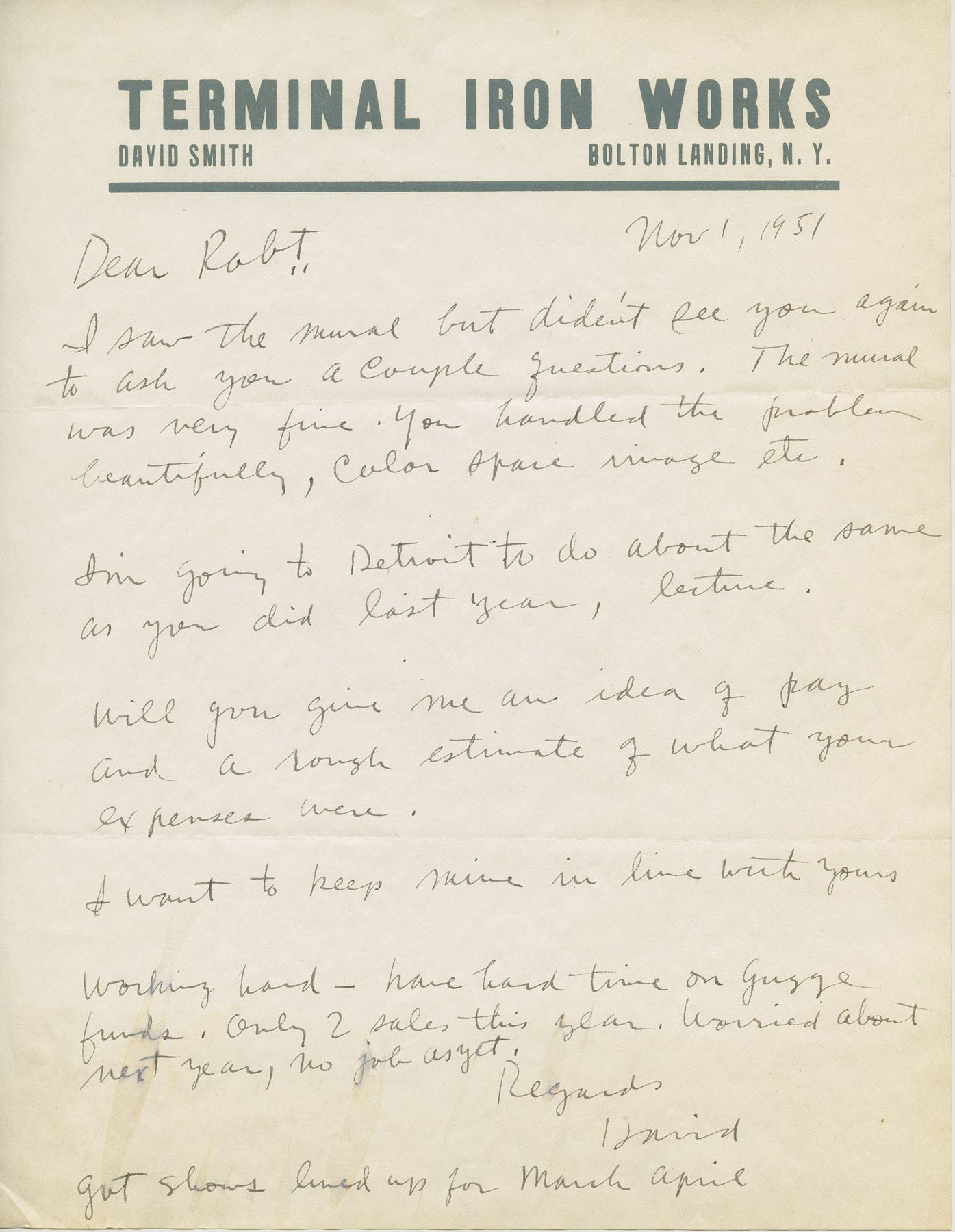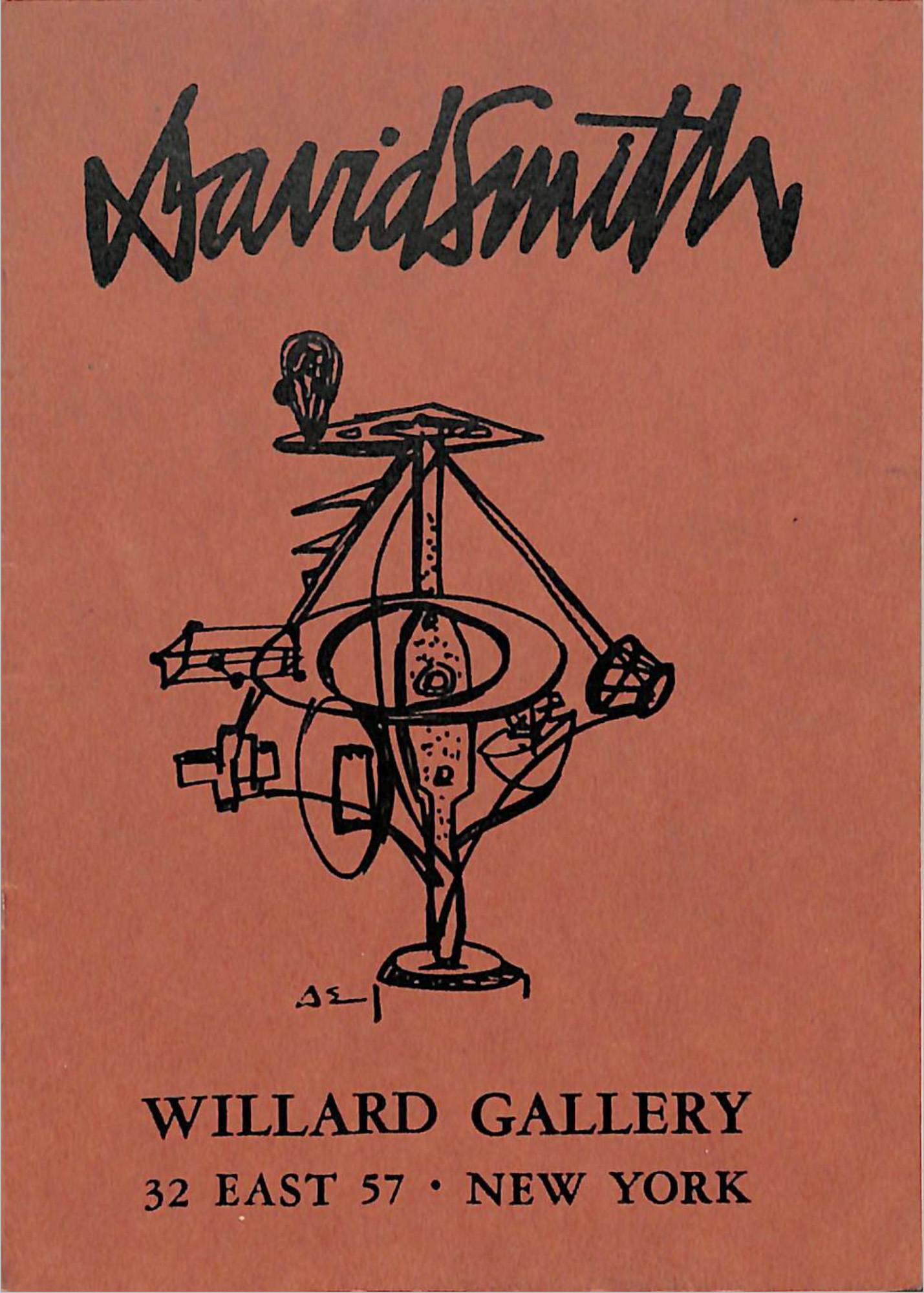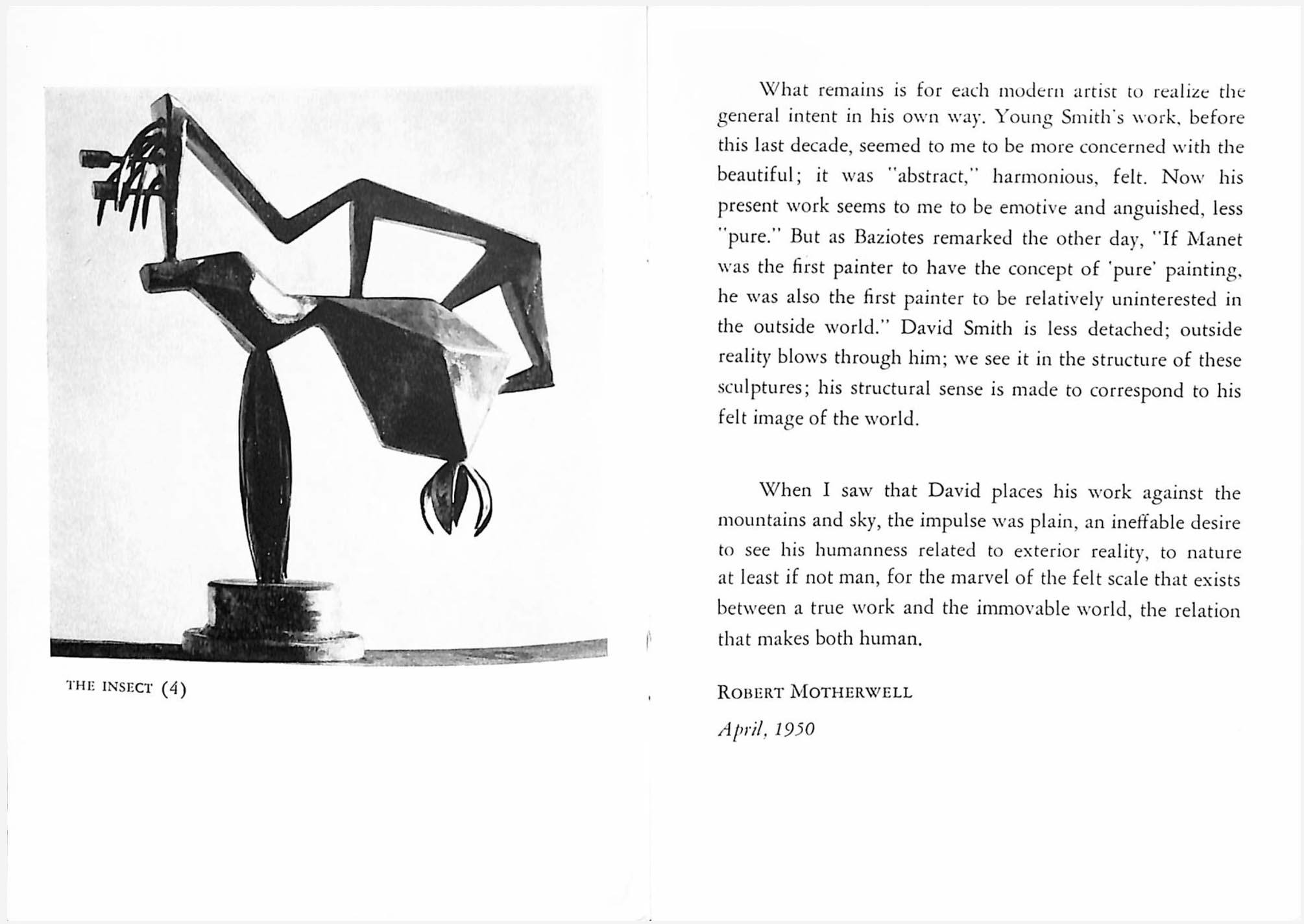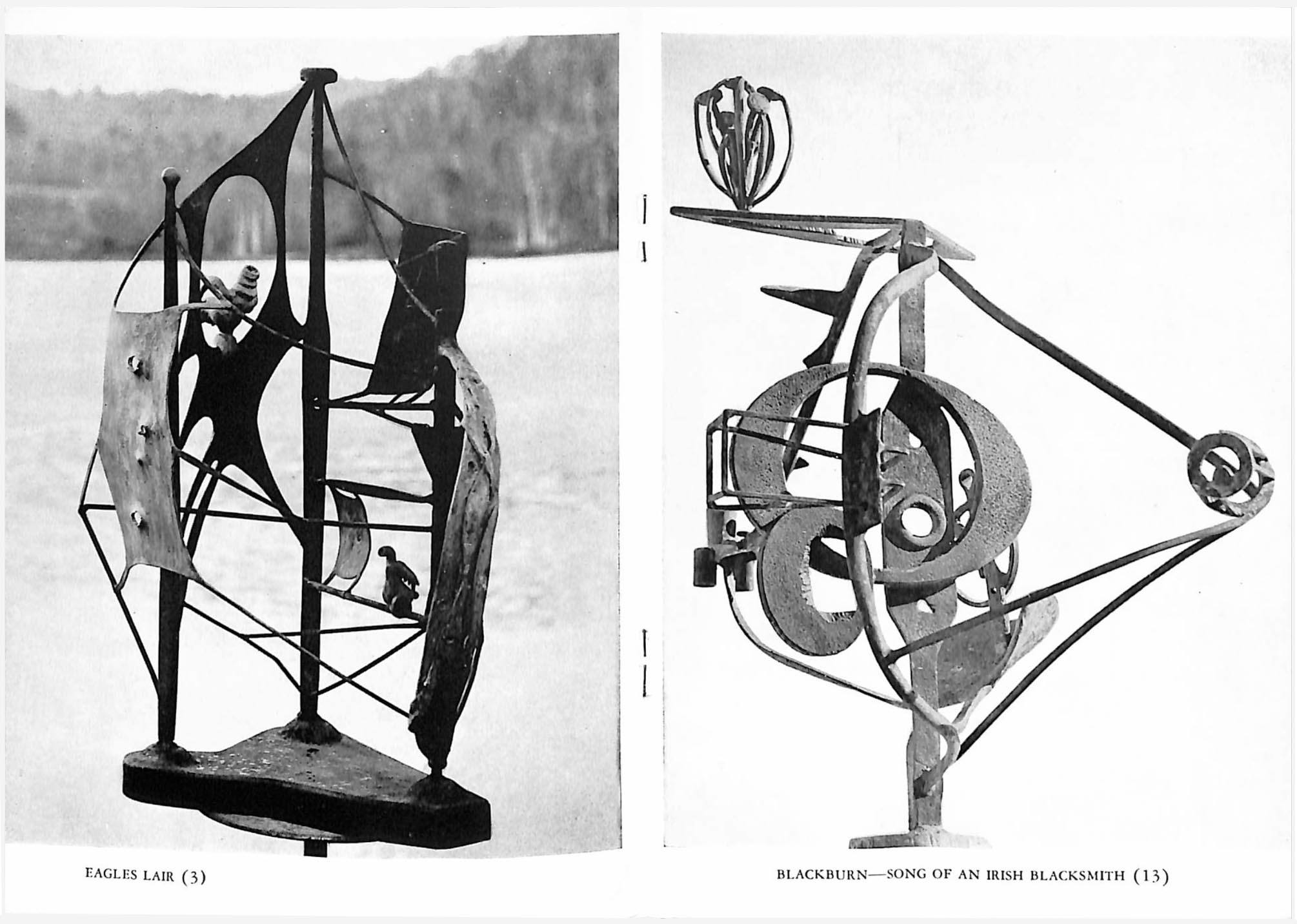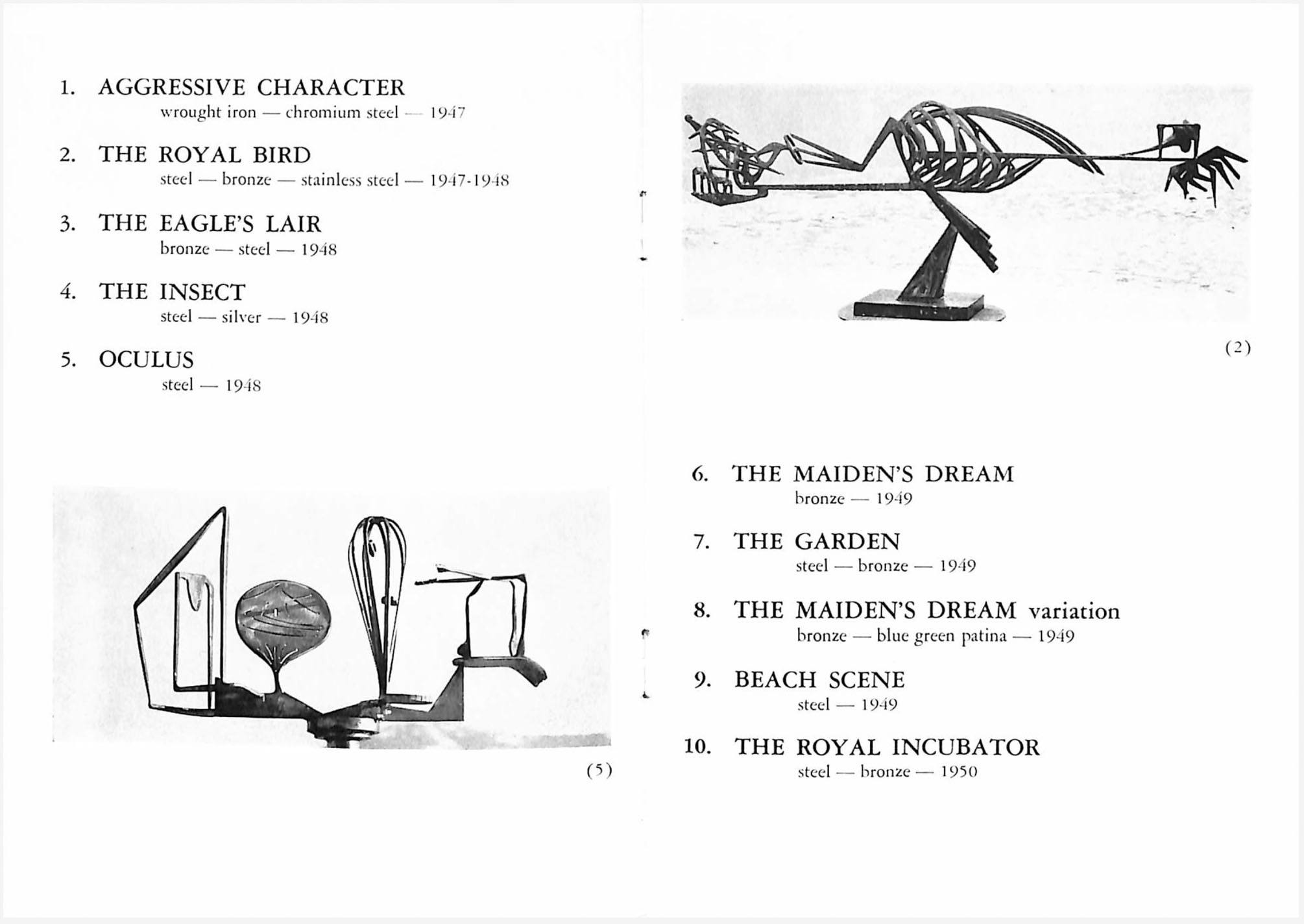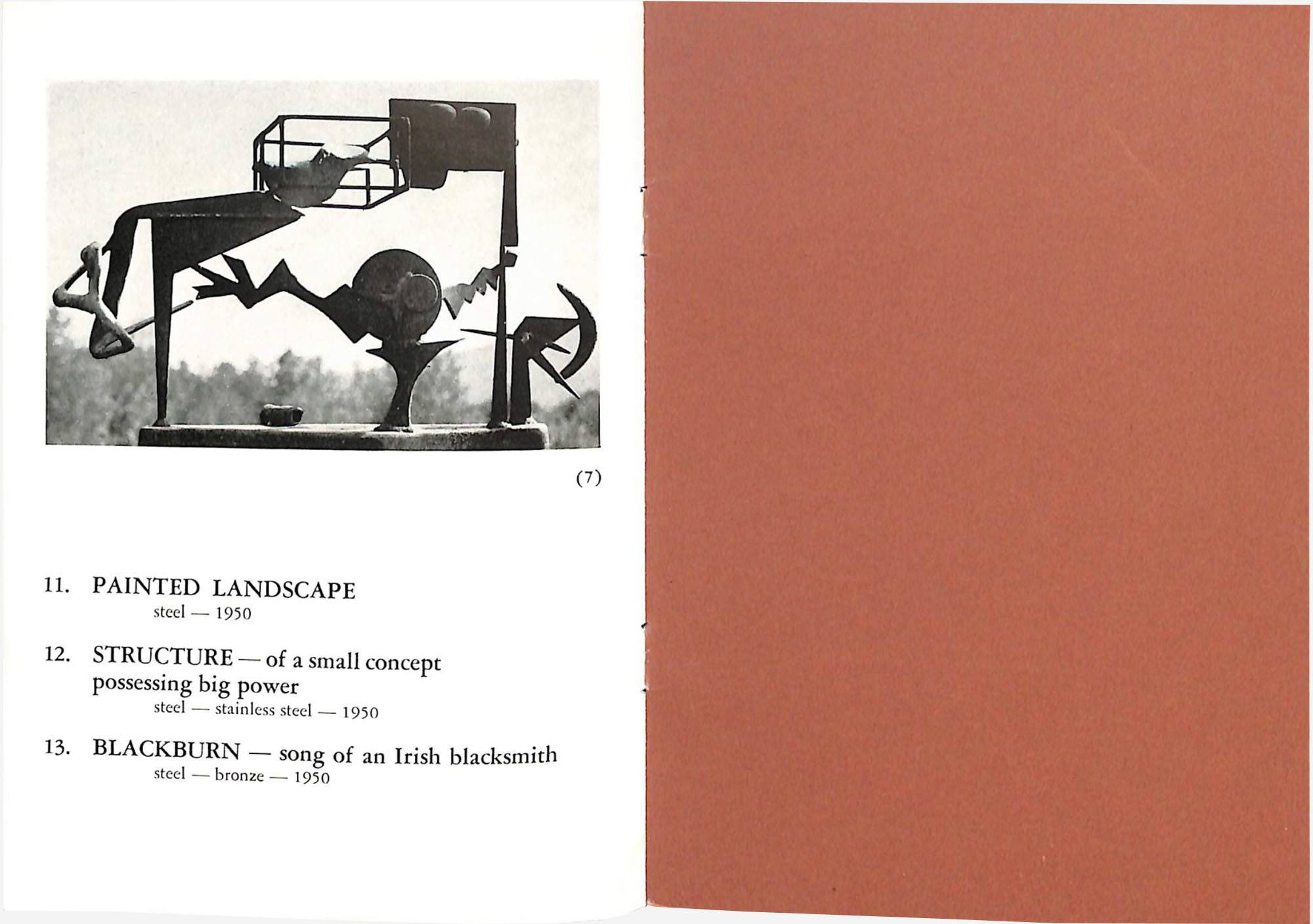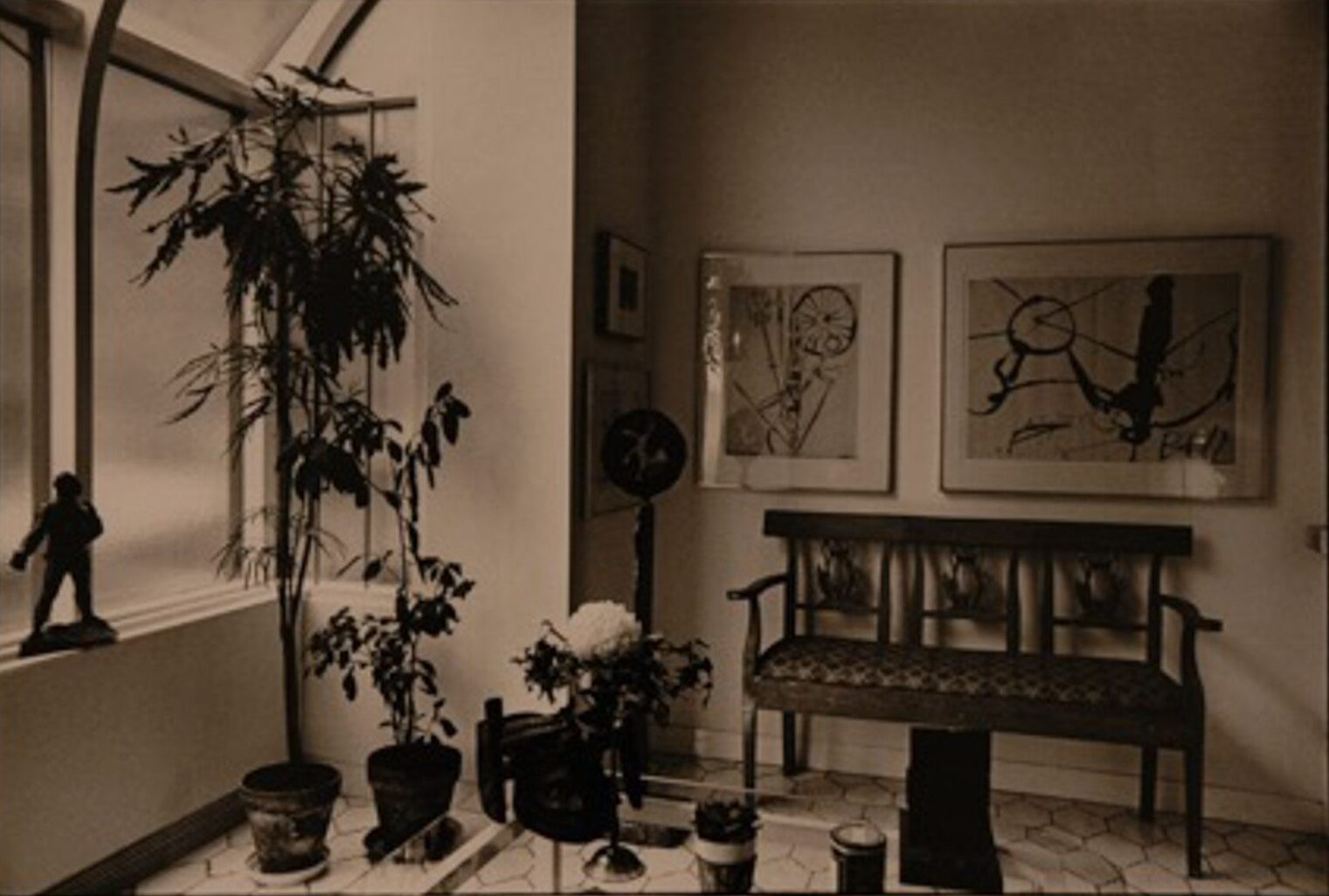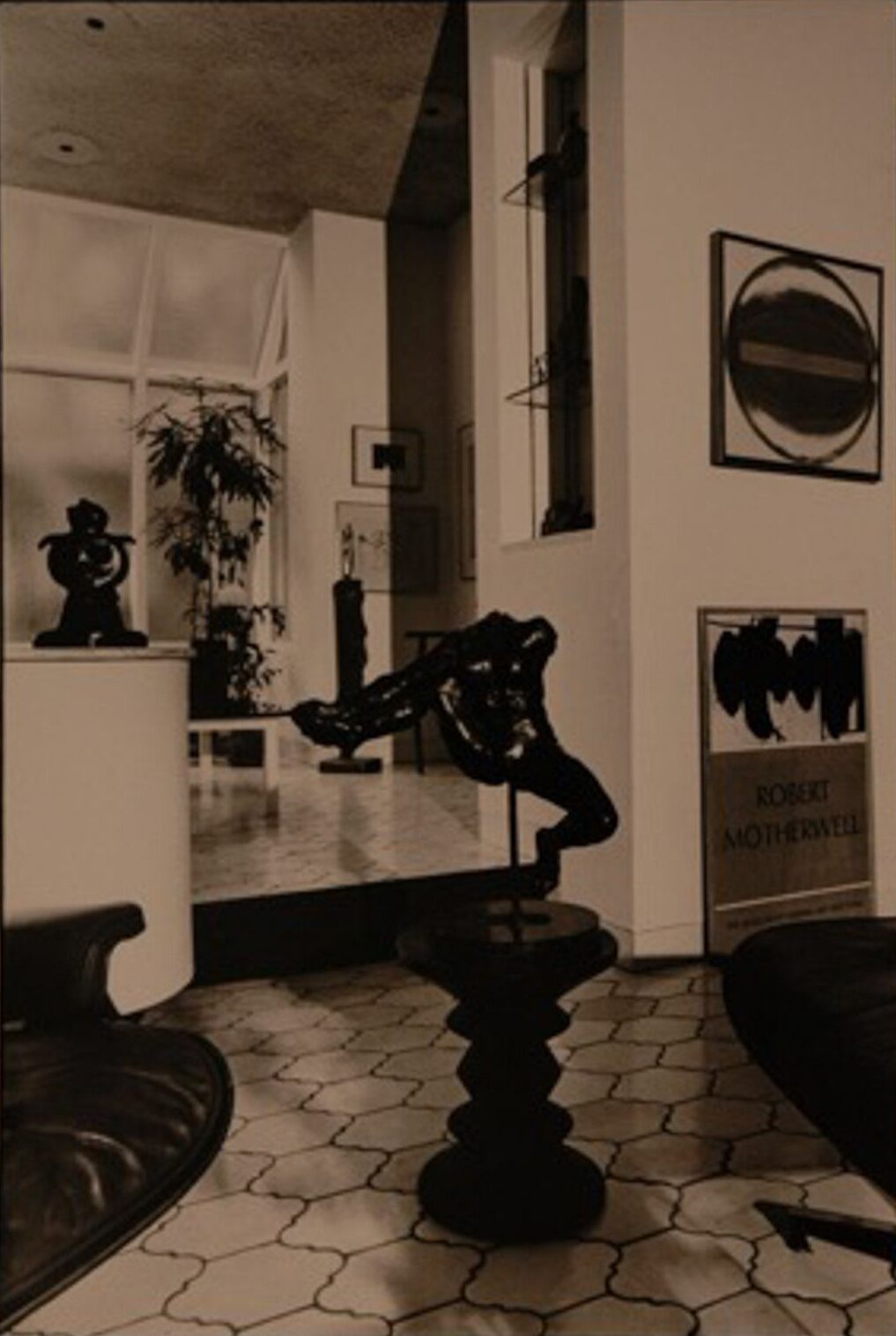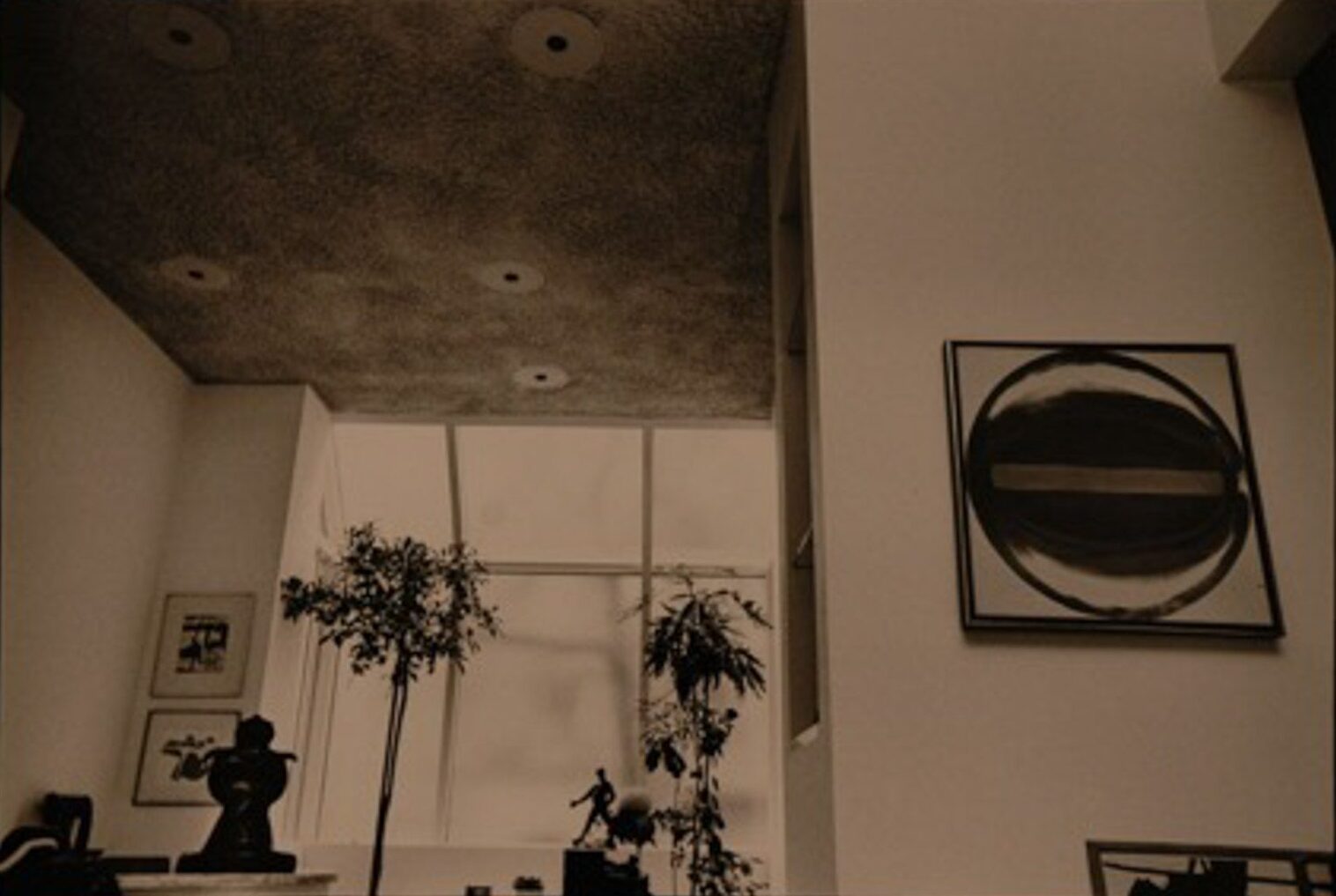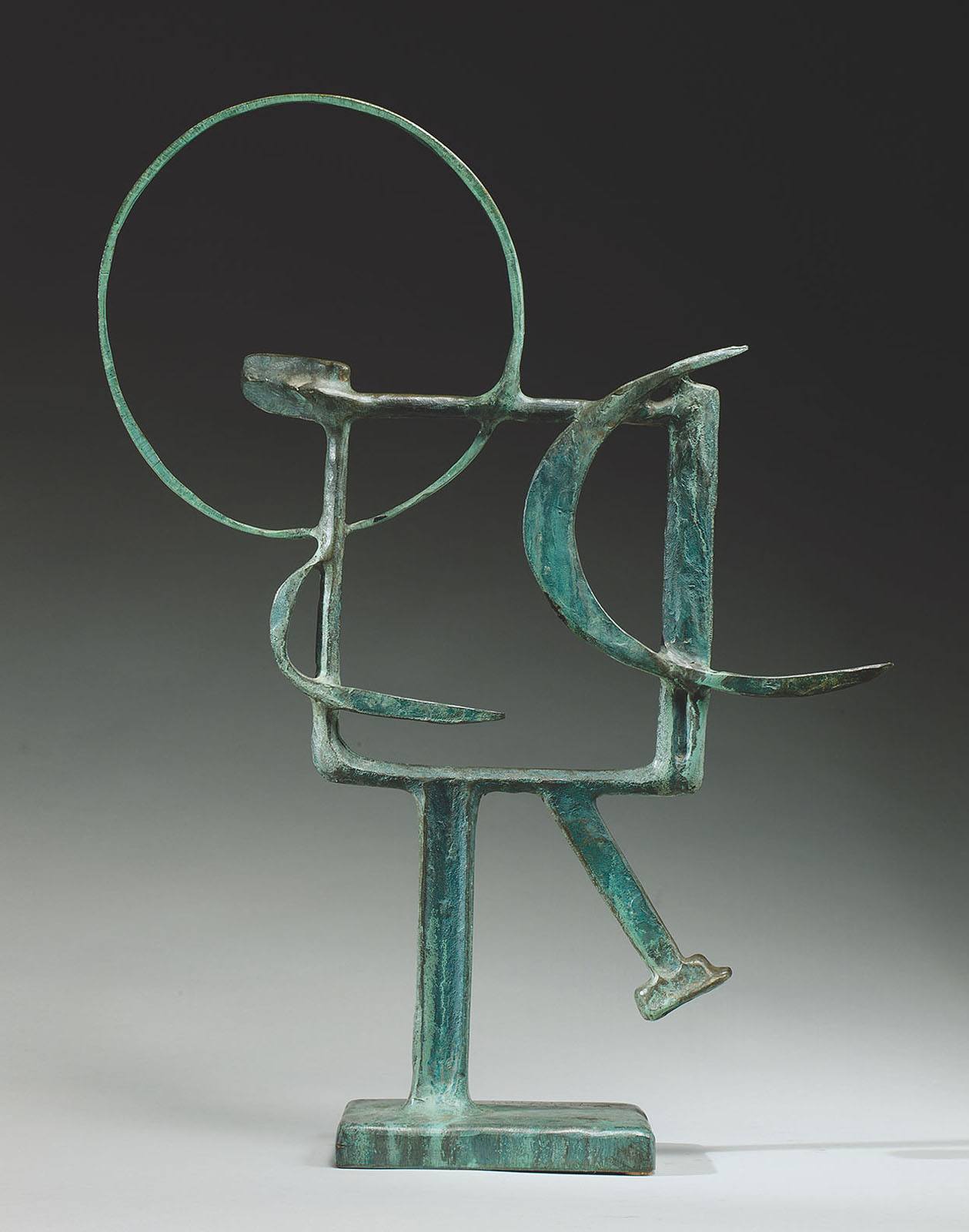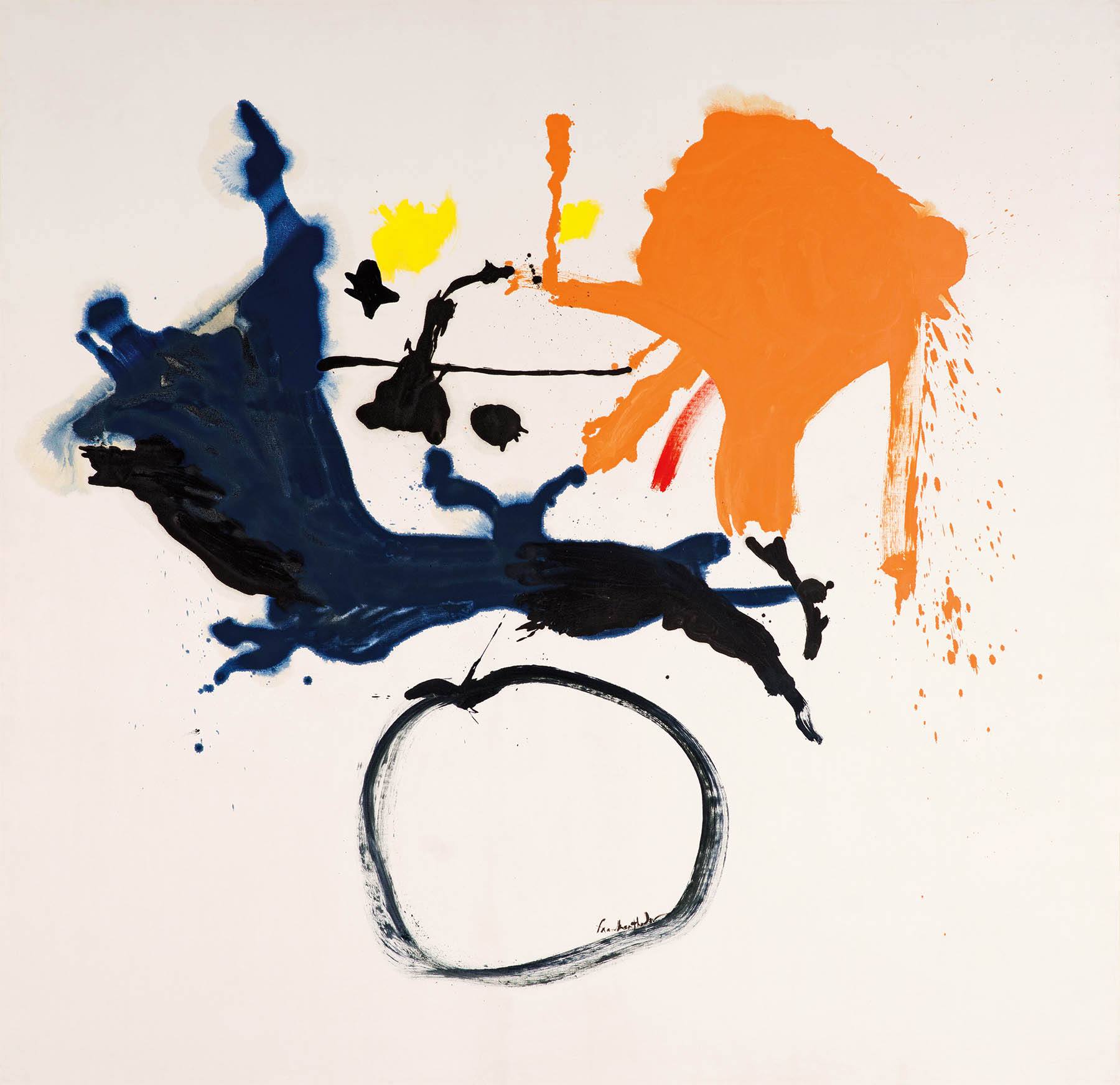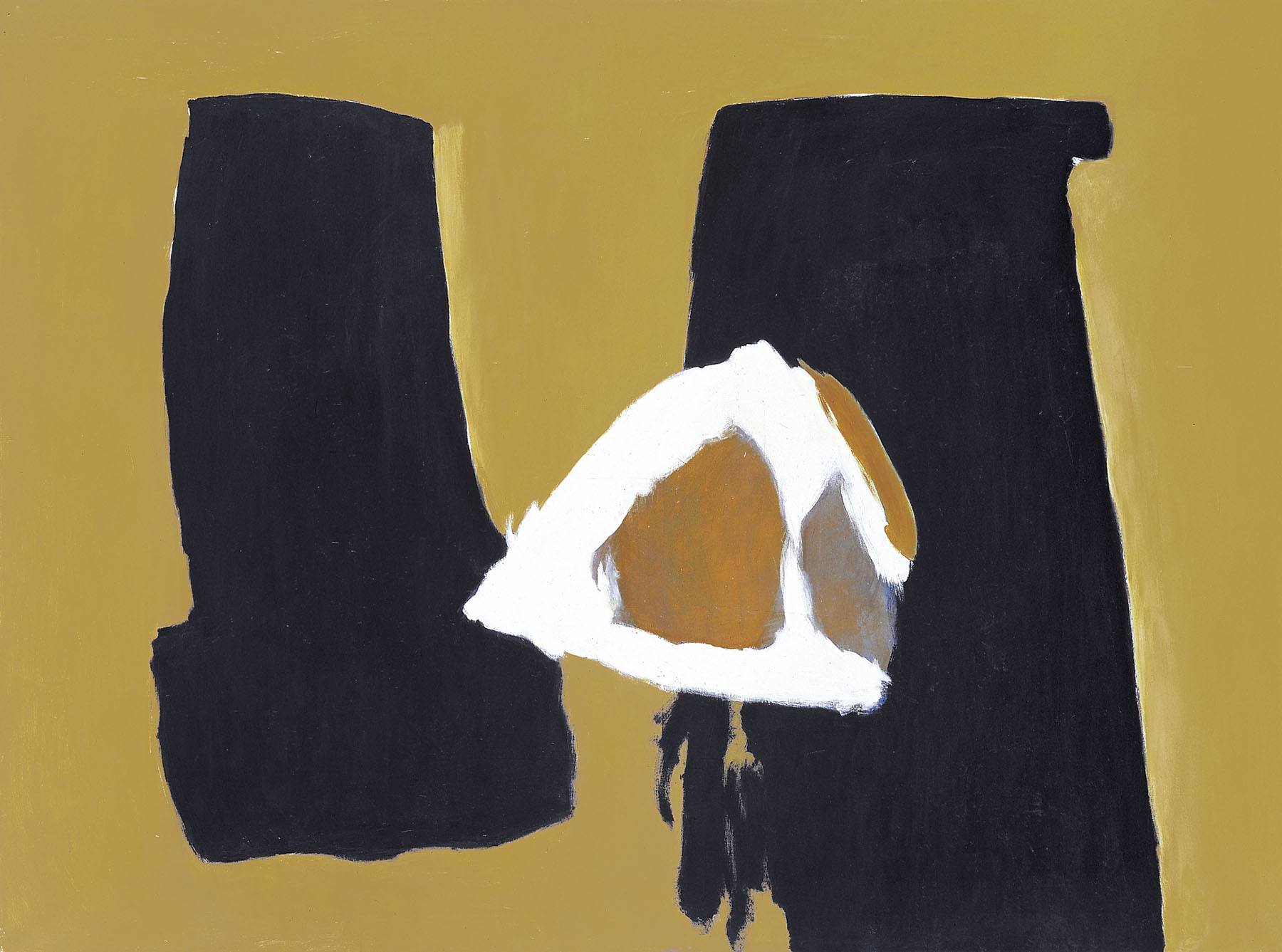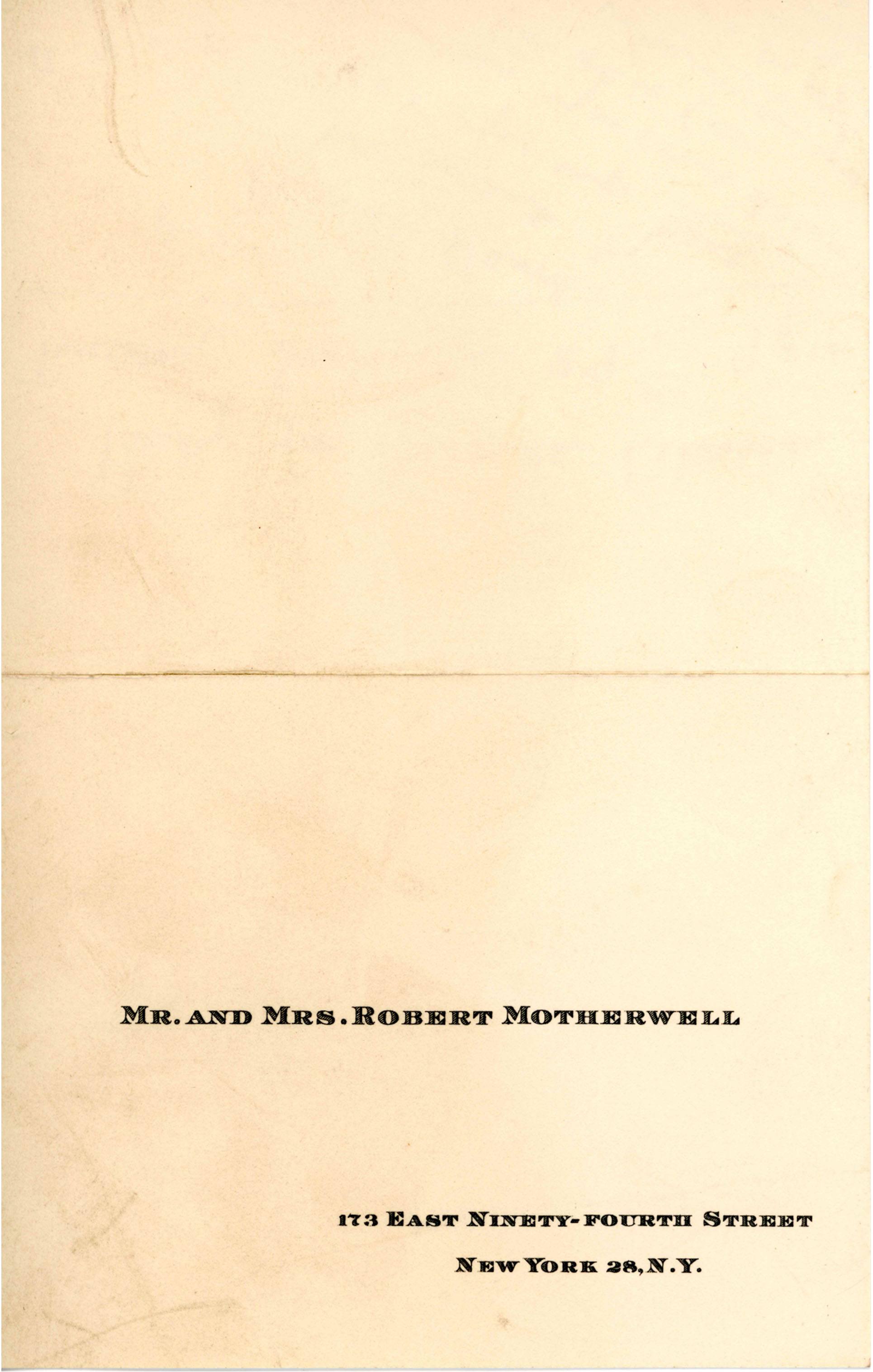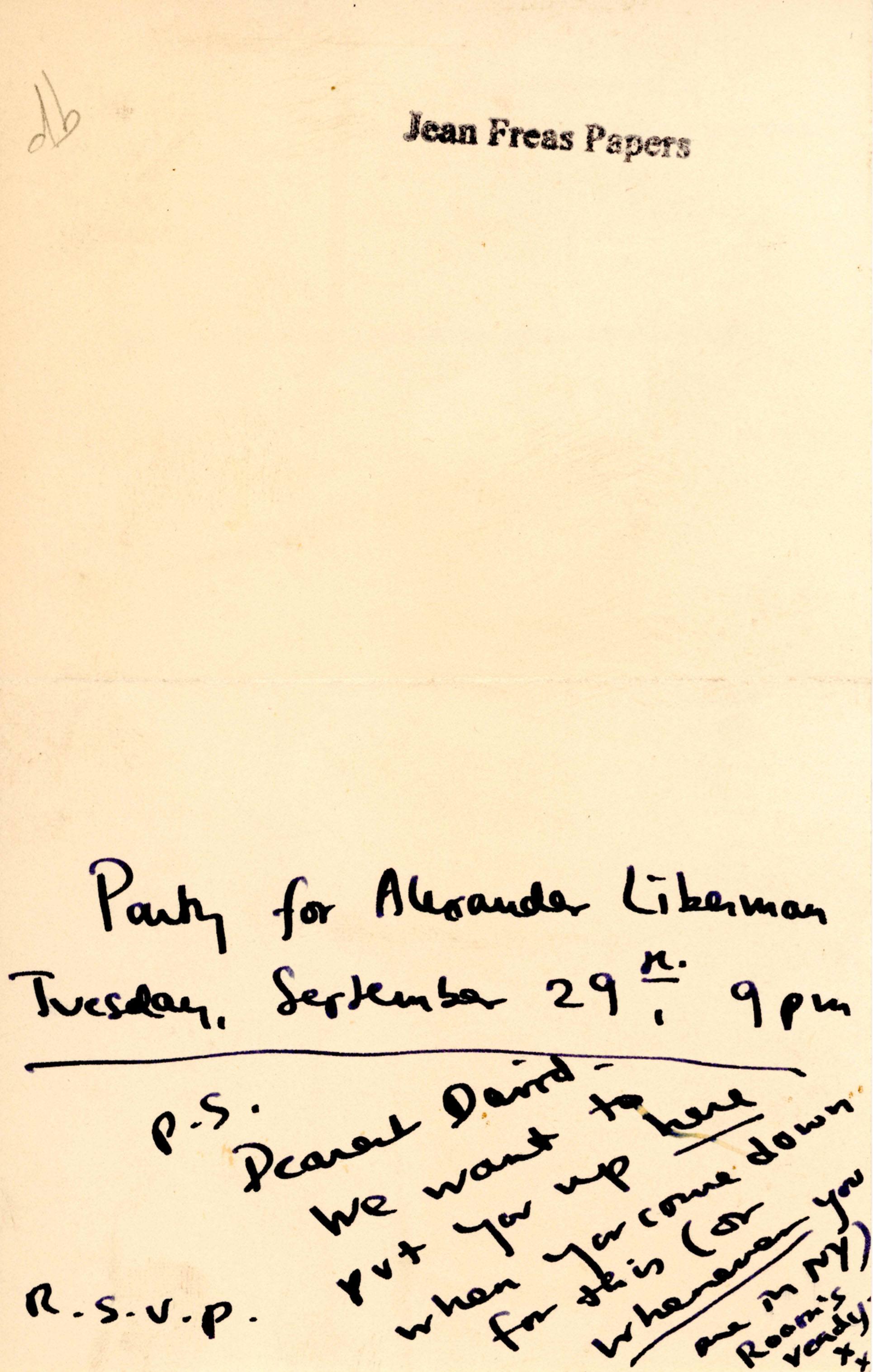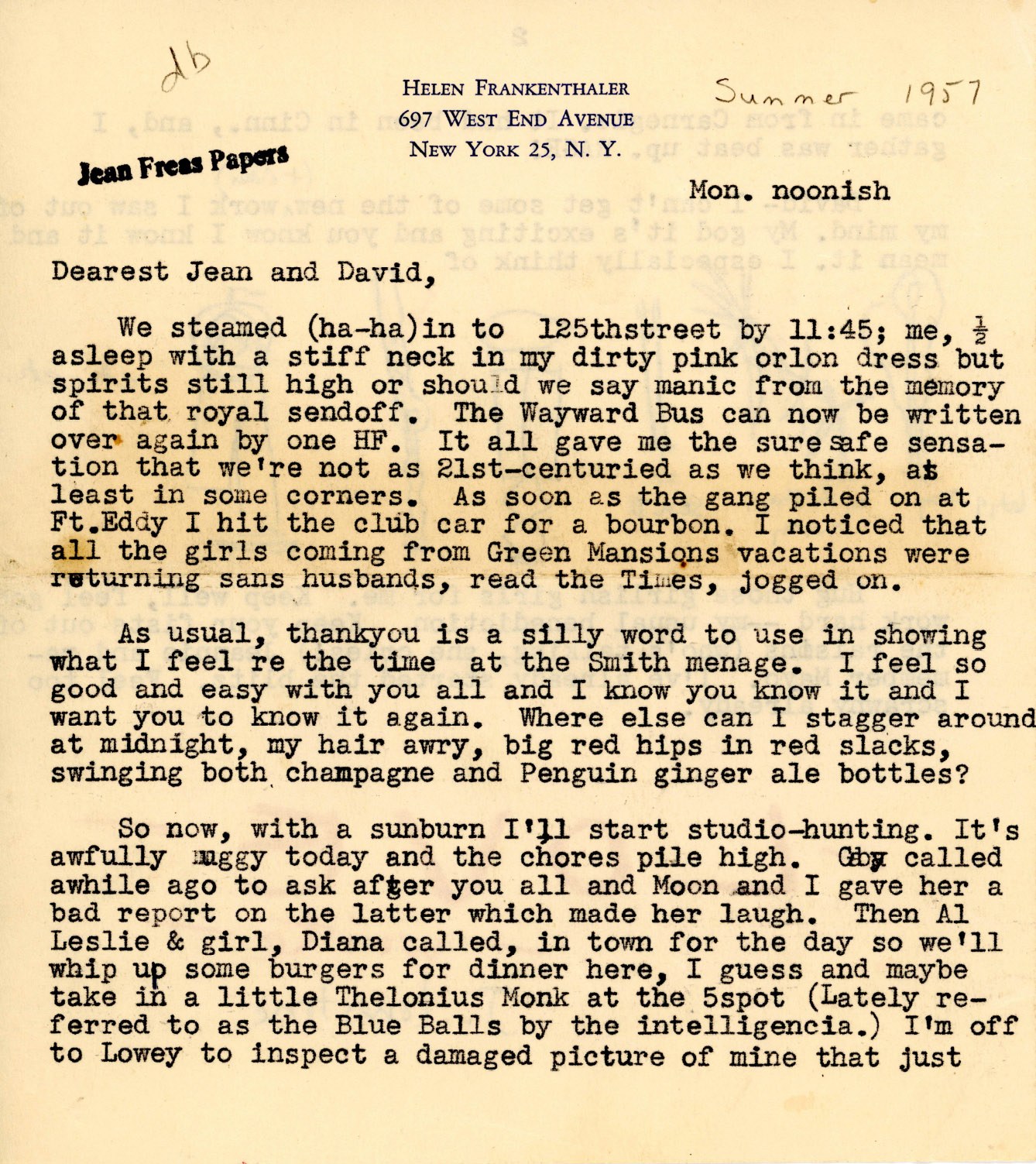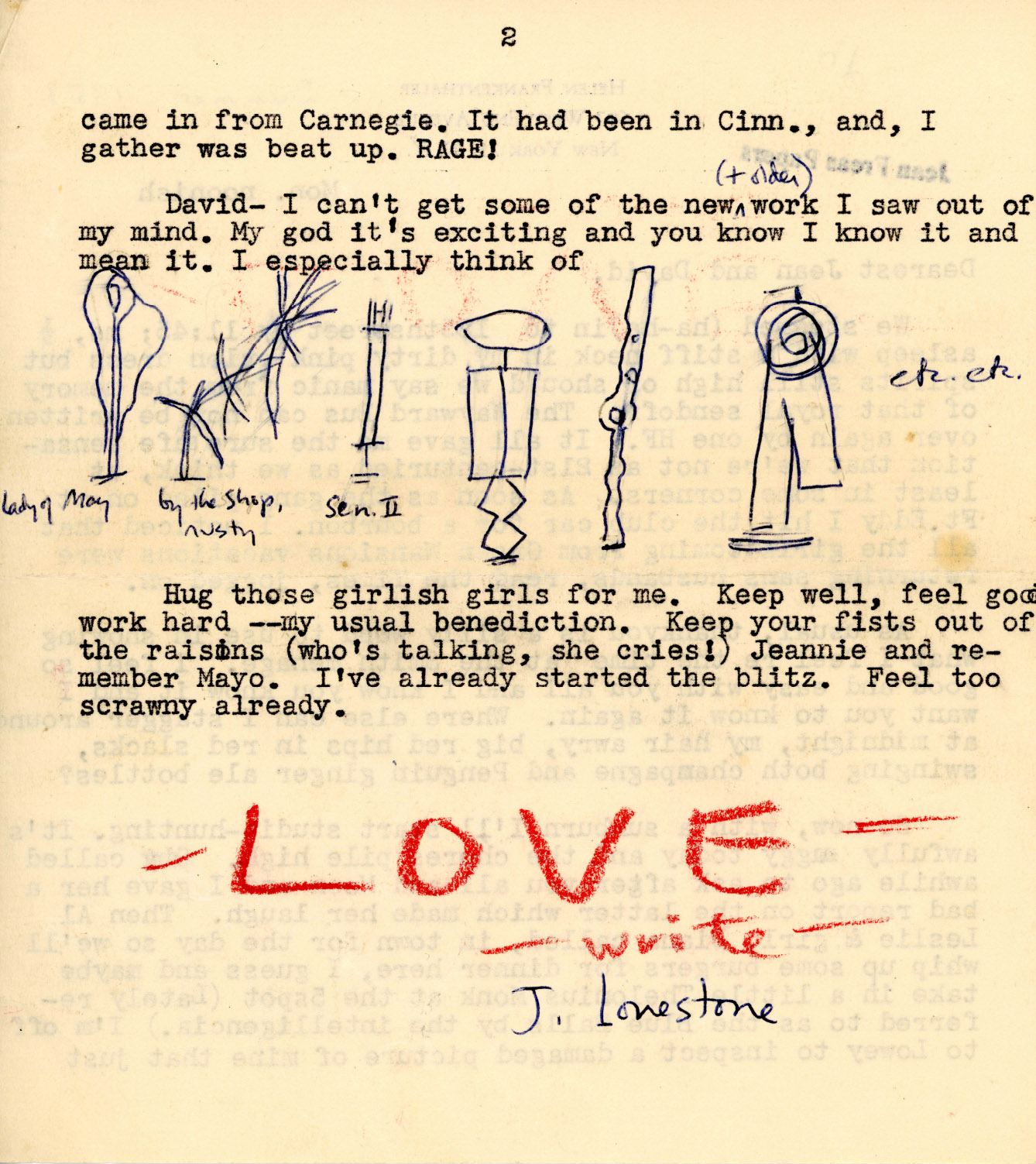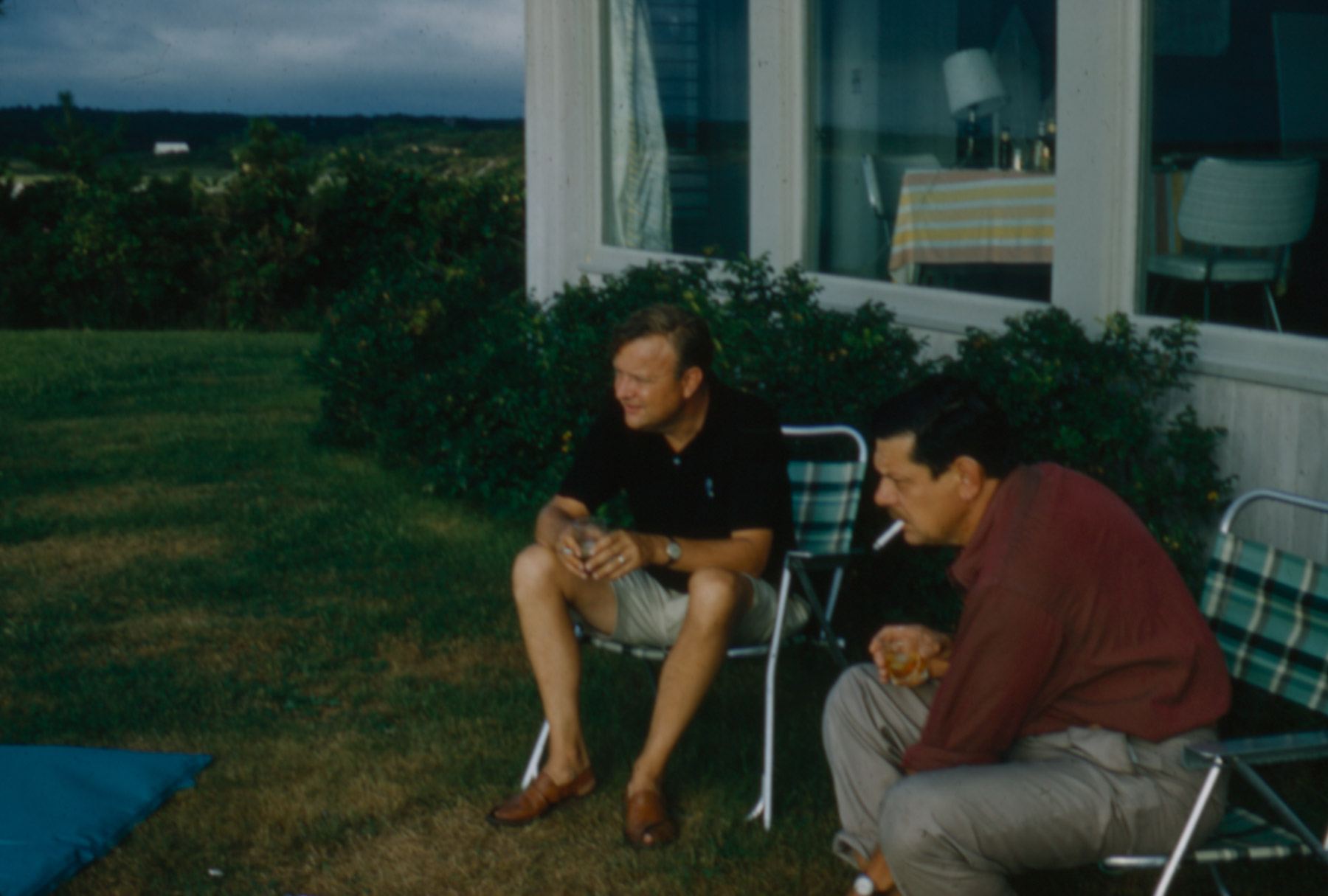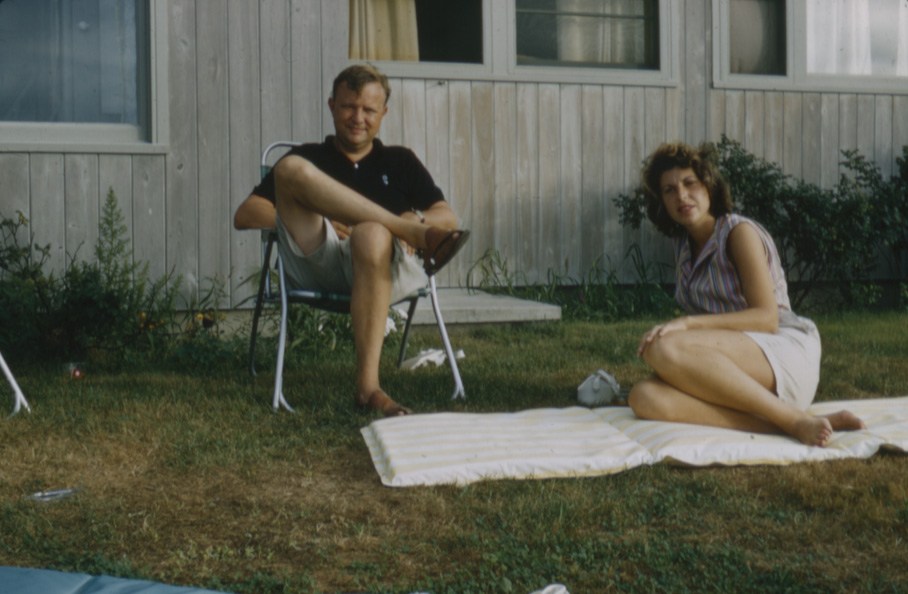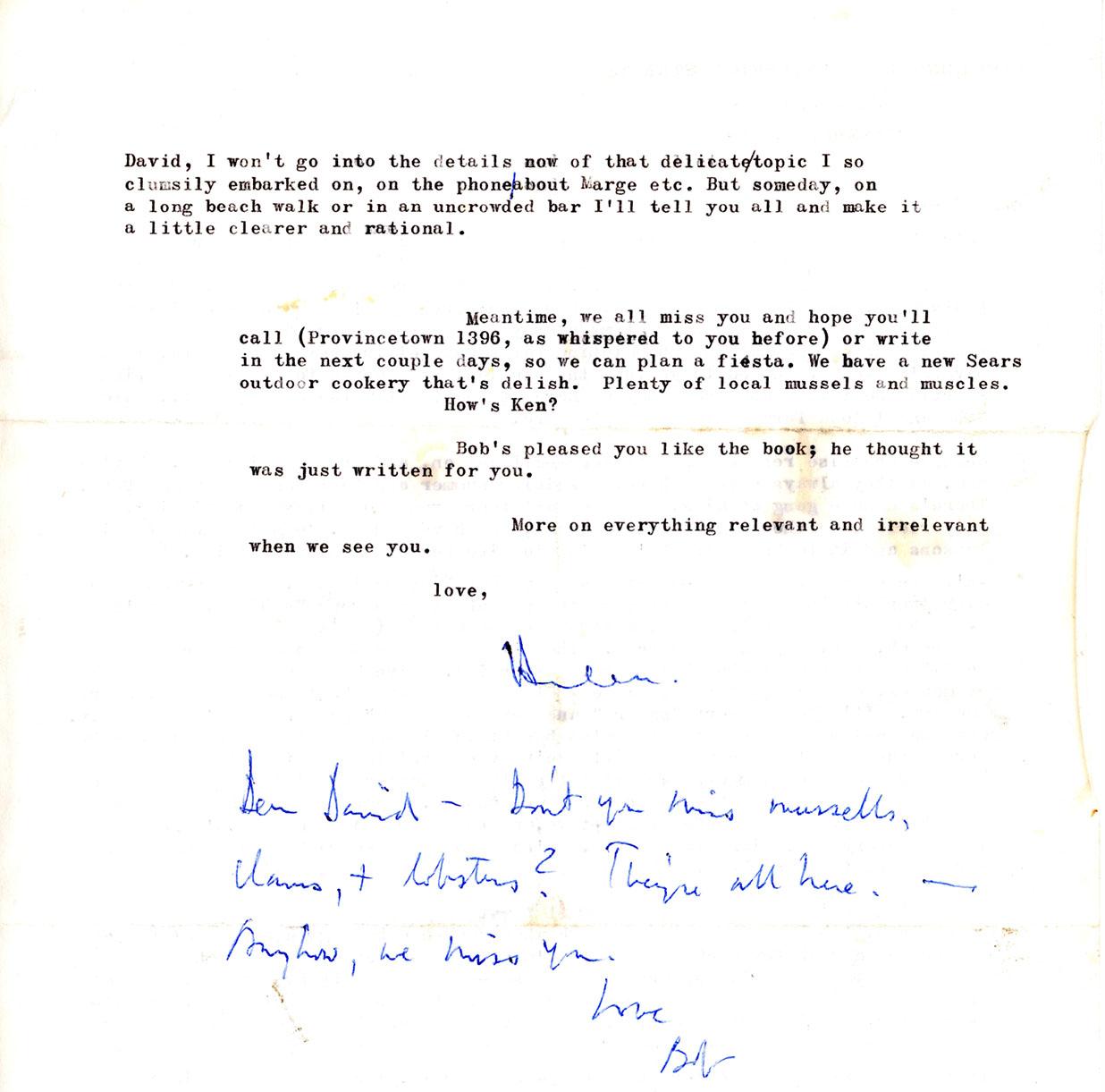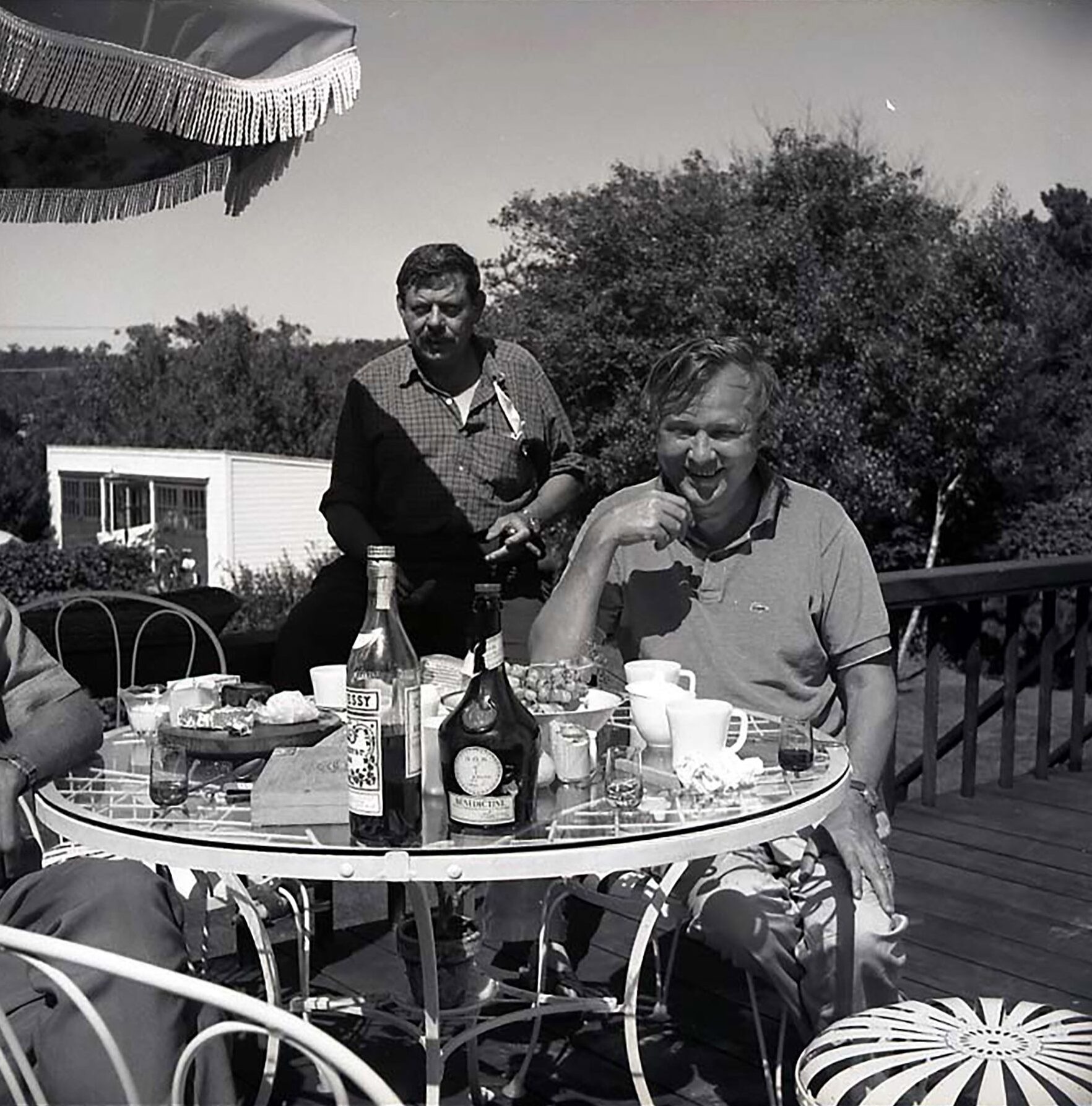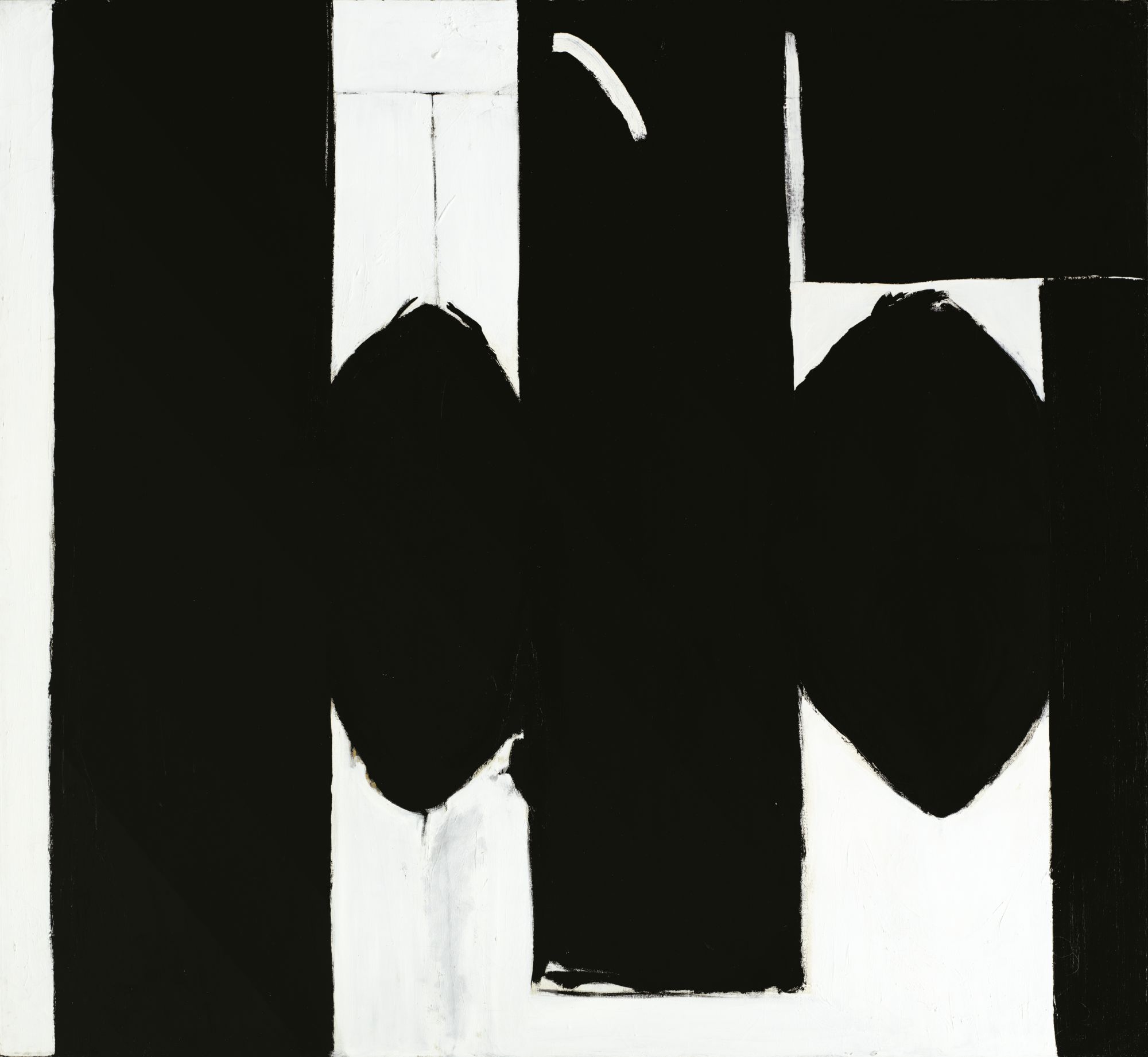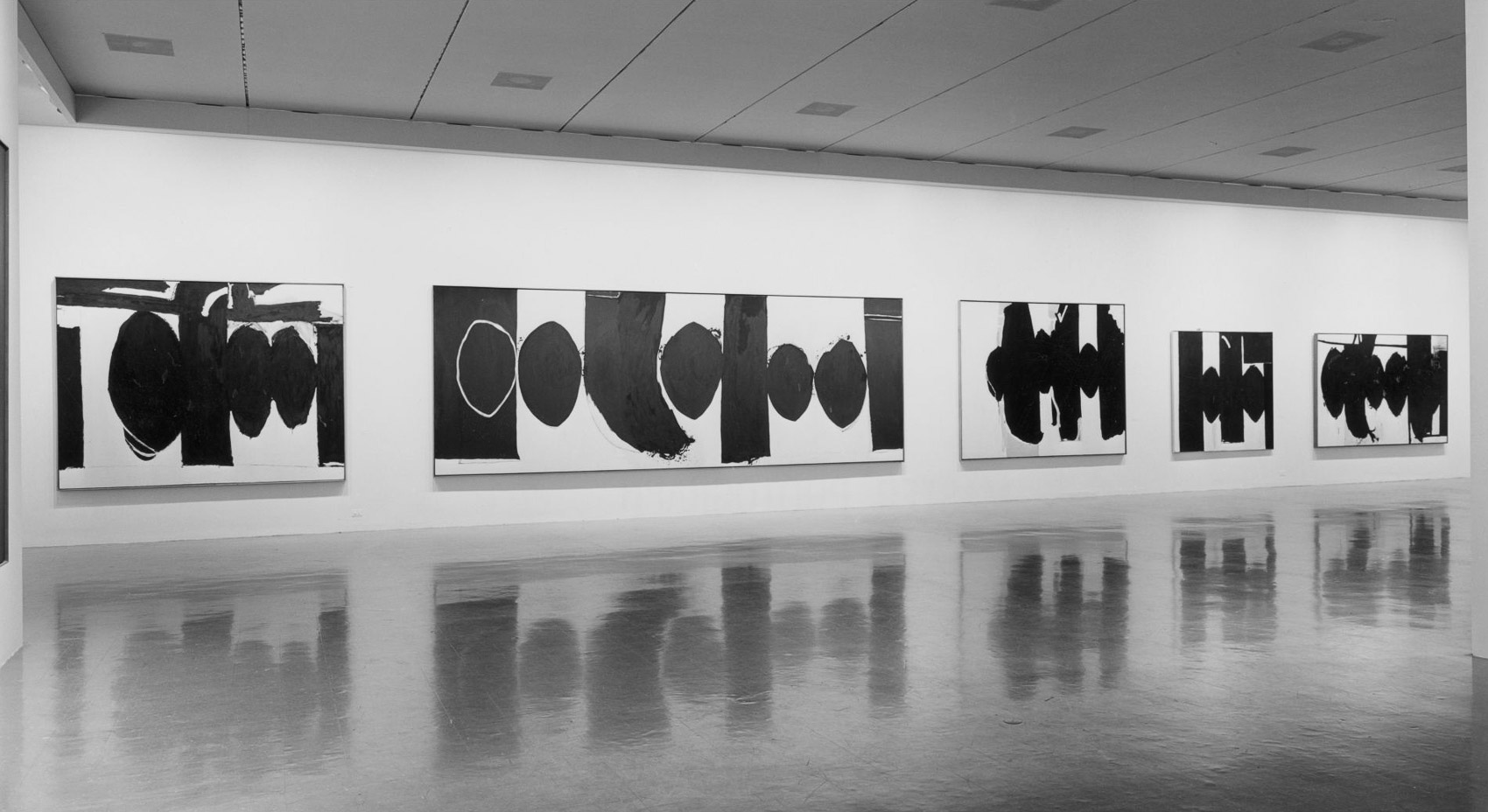Your browser is out-of-date!
Update your browser to view this website correctly. Update my browser now
A Memorable Friendship: Motherwell, Smith, Frankenthaler
This project is a collaboration between the Dedalus Foundation and the Estate of David Smith, with contributions from the Helen Frankenthaler Foundation.
Note: FULL ARTWORK, PHOTOGRAPH, AND ARCHIVES DETAILS CAN BE ACCESSED BY CLICKING ON AN IMAGE.
. . . .
The friendship between David Smith and Robert Motherwell began in 1947, several years after Smith had moved permanently to Bolton Landing, over two hundred miles north of New York City, where Motherwell was based. Despite the physical distance between them, the two men remained close until Smith’s death in 1965. In addition to mutual feelings of affection, they shared a number of aesthetic preferences. Both tended to compose their works with ensembles of disparate forms and had what might be called a collage mentality. In fact, both were unique among their colleagues at the time, in that they often composed their works with fragments of things from the real world – Smith with the found metal objects that he combined in his sculptures, Motherwell with the various papers that he used for his compositions in collage, which he called “the greatest invention of modernism.”
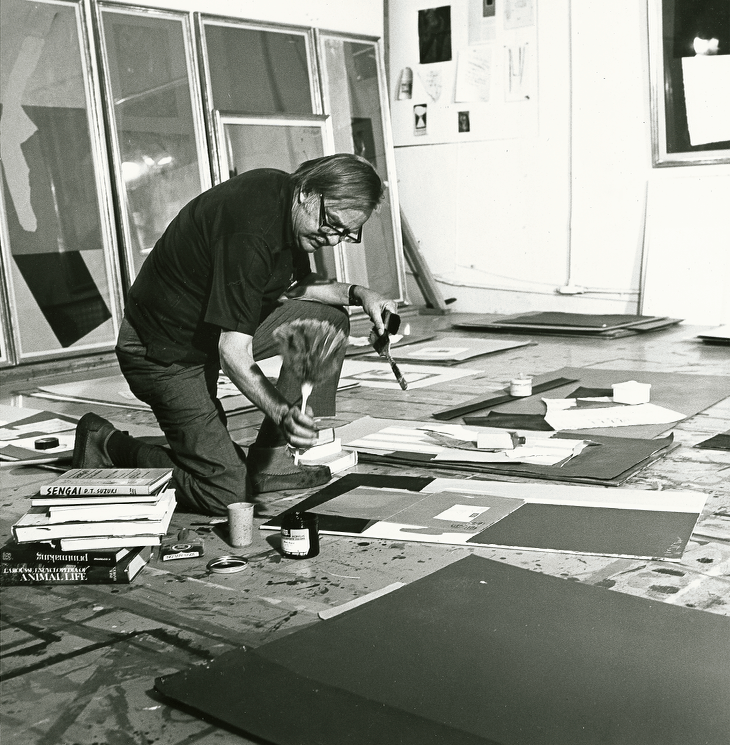
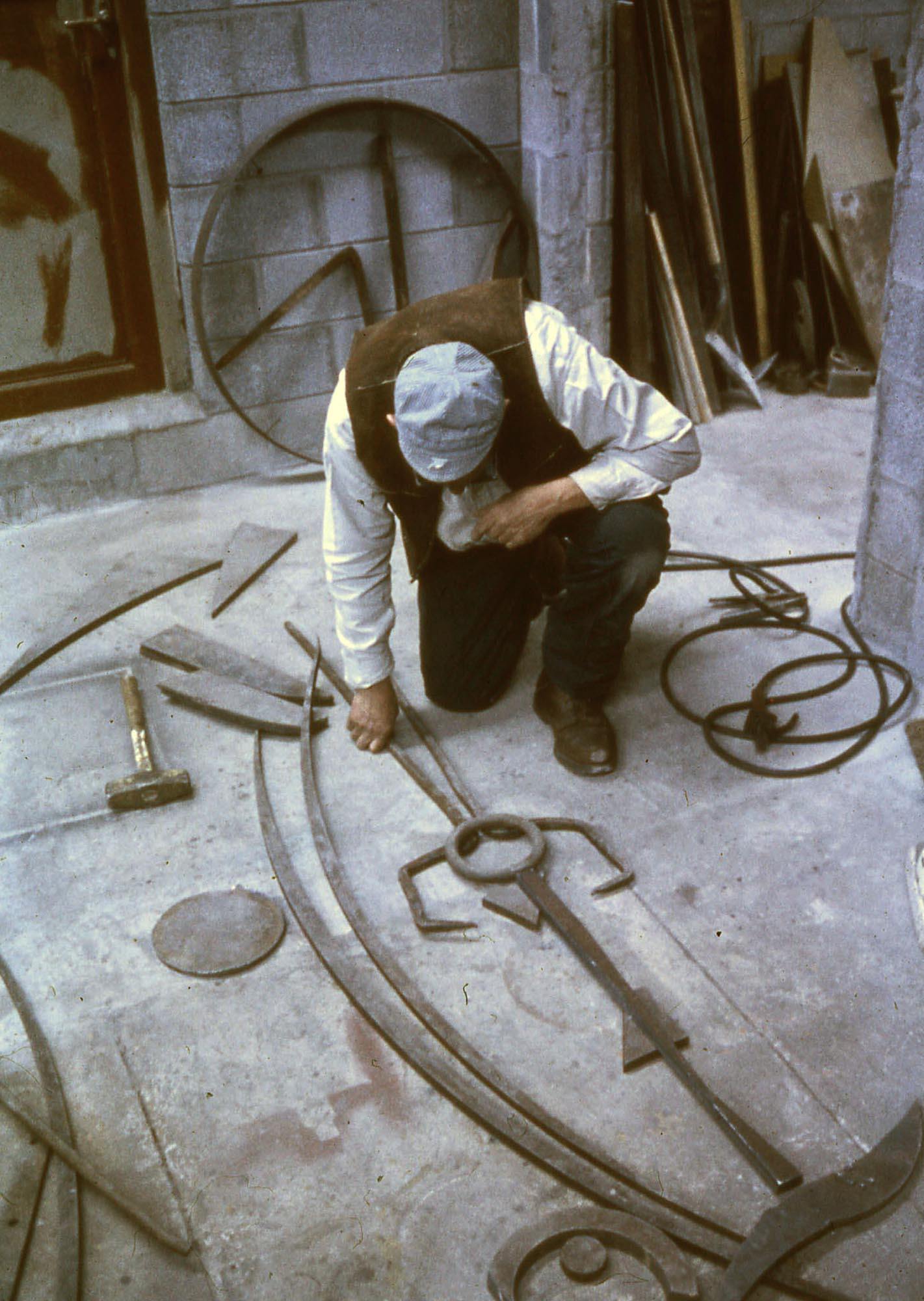
Robert Motherwell
The sensation of physically operating on the world is very strong in the medium of the papier collé or collage, in which various kinds of paper are pasted to the canvas. One cuts and chooses and shifts and pastes, and sometimes tears off and begins again. In any case, shaping and arranging such a relational structure obliterates the need, and often the awareness of representation. Without reference to likenesses, it possesses feeling because all the decisions in regard to it are ultimately made on the grounds of feeling.
“Beyond the Aesthetic,” 1946
David Smith
Sculpture is no longer limited to the slow carving of marble and long process of bronze. It has found new form and new method. Here I am talking about direct metal construction. Contrary to the carving away technique of classical sculpture, the new method is to assemble the whole by adding its unit parts. The building up of sculpture from unit parts, the quantity-to-quality concept is also an industrial concept, the basis of automobile and machine assembly in the steel process. Direct metal work has broadened the concept of sculpture and increased the speed of execution, added new tensile strengths to make sculpture as free as drawing.
Statement, WNYC Radio, 1952
Both artists had an aesthetic preference for compositions that were graphically clear and legible, which set them apart from most of their colleagues.
"DYN 6"
Both Motherwell and Smith were concerned about the isolation of many American artists from European modernism, and were eager to contribute to avant-garde journals such as Wolfgang Paalen’s Dyn, the sixth issue of which featured images of both artists’ artwork and Motherwell’s essay “The Modern Painter’s World.”
"Possibilities"
In 1947, Motherwell invited Smith to contribute to a new journal he and Harold Rosenberg were working on called Possibilities, the declared purpose of which was “to combat the indifference to, and reaction against, modern art in the United States.”
Robert Motherwell writes David Smith on behalf of Possibilities, November 1947
I hope that you’ve received “Possibilities” by now, and that you like it … If, as I hope now, the second number can be larger, I would like again to run something by you, given you are for me one of the few American artists for whom I have any deep lying sympathy + support. Perhaps next time we could concentrate on one piece or a series. I would like, if you could let me, to run up to your place some time in the early spring + discuss it with you.
David Smith replies to Robert Motherwell's letter, undated (1947)
Thanks for Possibilities. I liked it very much. I’m prejudiced because my work was in it. I’m not an impartial judge … If you are around town the 4th leave word with Kootz or Marian where I can locate you. I told Sam Kootz that I liked your work last year. Our shows were on at about the same time. I don’t know whether he mentioned it – this isn’t an exchange compliment but an aid in understanding each other.
As their friendship grew, both men showed regularly in New York, where they would meet for cocktails, or to take in some jazz or visit exhibitions together. When they were apart, they wrote to each other about various subjects, including their impressions of each other’s work.
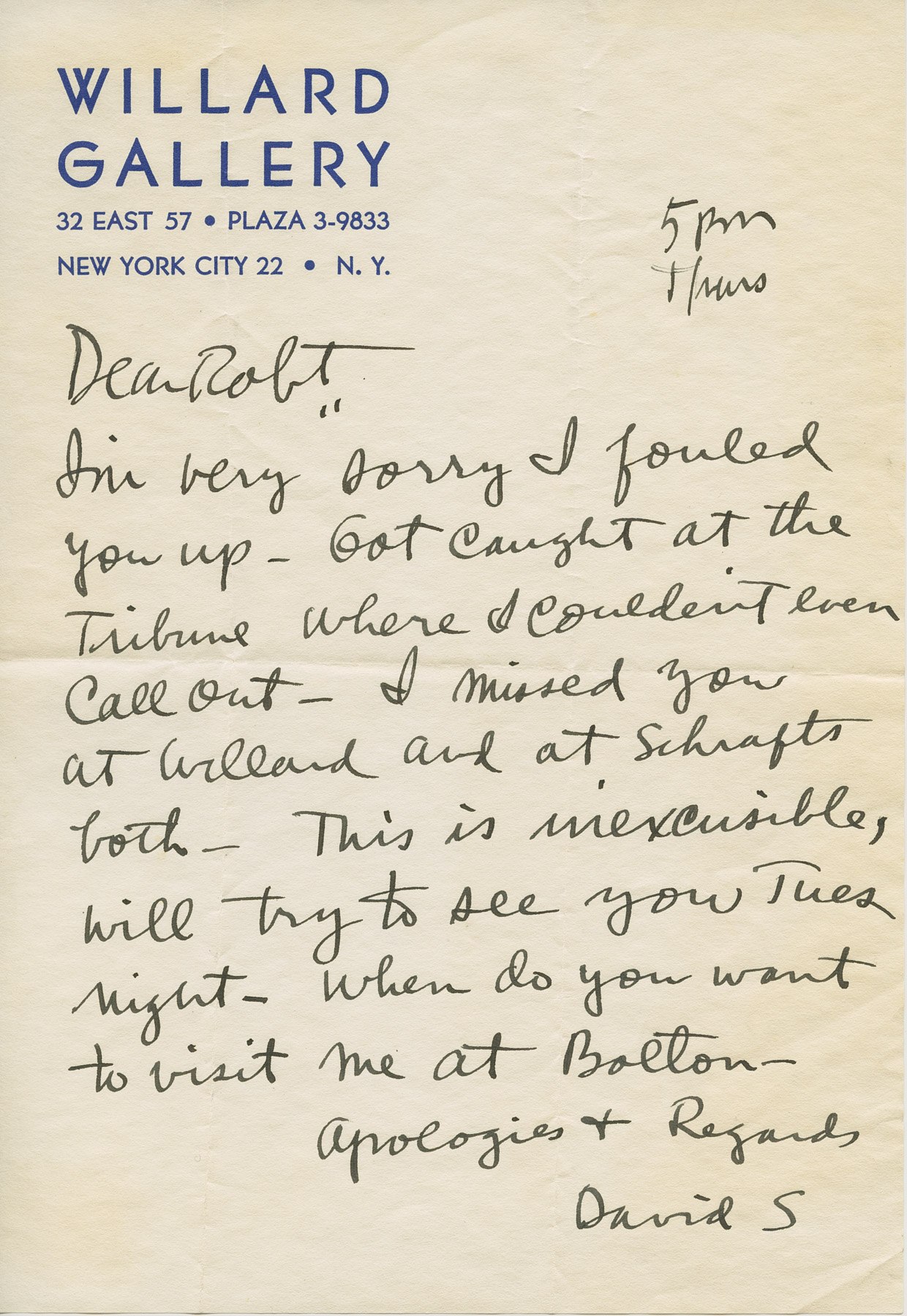
Davd Smith writes Robert motherwell with apologies for a missed appointment, undated
I’m very sorry I fouled you up – got caught at the Tribune where I couldn’t even call out – I missed you at Willard and at Schrafts both – this is inexcusable, will try to see you Tues night – when do you want to visit me at Bolton
Motherwell wrote the introduction to the catalogue for Smith’s 1950 exhibition at Willard Gallery, in which he recognized the importance of setting and nature to Smith’s work:
. . . .
Helen Frankenthaler met David Smith in 1951, when she joined Clement Greenberg on visits to Bolton Landing. She and Robert Motherwell met in 1957, soon became very close, and were married in April 1958. During their marriage, their friendship with David Smith became even stronger, as Smith frequently stayed with them at their home on East 94th Street when he was in New York. Eventually, they even gave him his own key to their home so he could come and go as needed during his visits to the city.
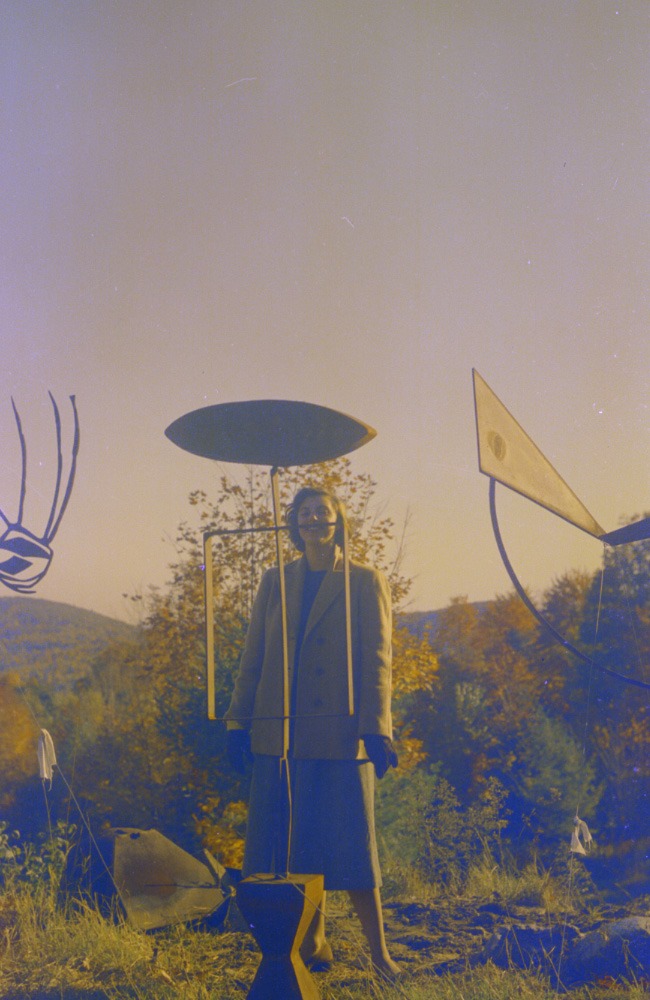
Helen Frankenthaler with David Smith’s The Hero, 1951-1952; in progress, on his property in Bolton Landing, NY, fall 1951.

Helen Frankenthaler’s handwritten notes in David Smith’s Willard and Kleeman exhibition catalogue, 1950
Frankenthaler had long been an admirer of Smith’s work. In 1950 she had written an unpublished review of Smith’s exhibition at Willard and Kleeman Galleries, in which she praised Smith’s work as being “tremendous in every sense of the word … direct, forceful, original, emotional.”
In 1951, she had purchased Portrait of an Eagle’s Keeper (1948-49) from Smith, and that sculpture was prominently placed in her and Motherwell’s home, along with several of their own works and artworks by others.
The works of the three artists, different as they were from each other, had strong affinities during the years they spent together. In particular, all three employed contrapuntal interactions of forms and gestures in their work.
The friendship between the three artists remained very strong. Photographs and correspondence between the three artists over the years reflect the depth of their friendship and their respect for each other’s work.
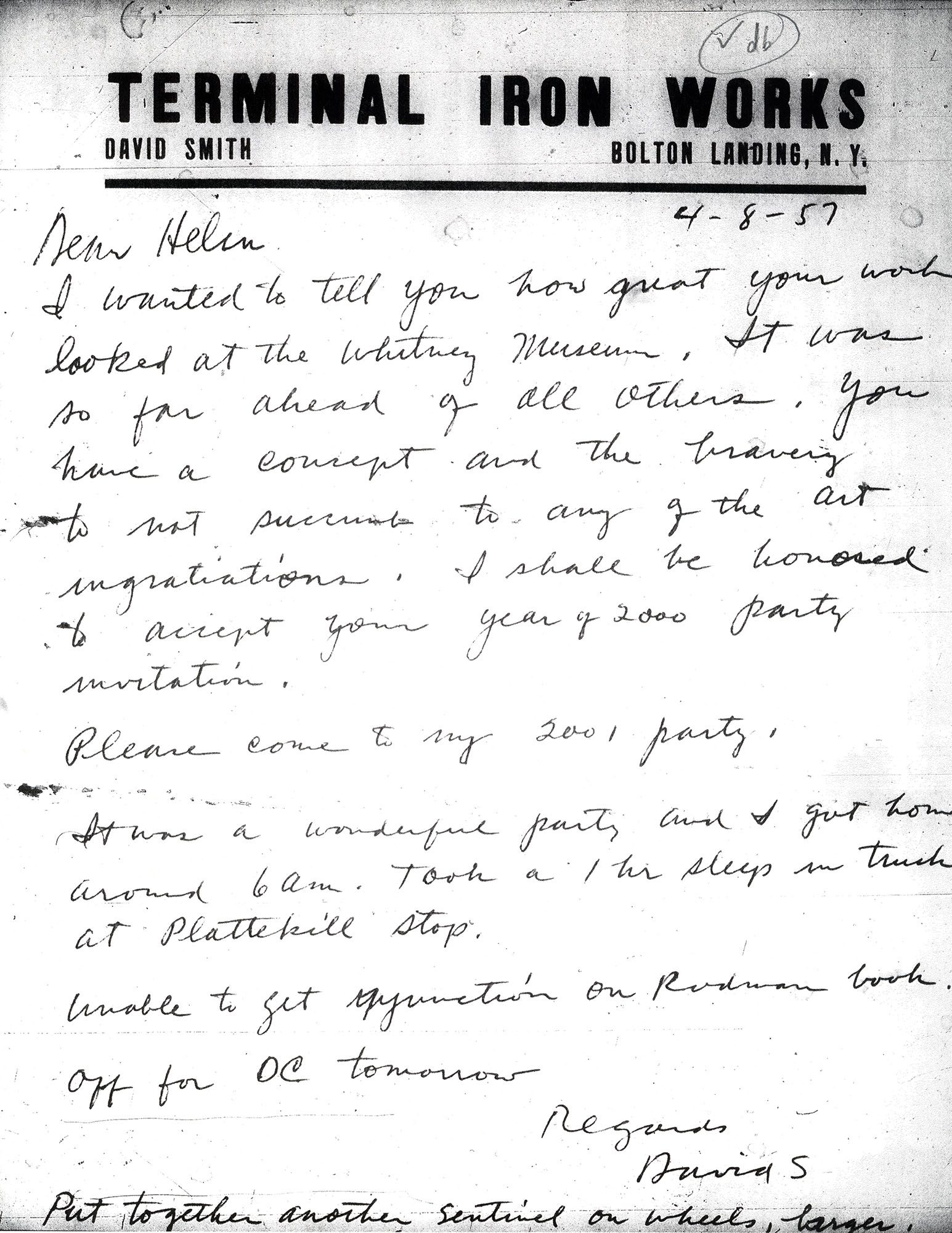
David Smith writes Helen Frankenthaler after seeing her work at a Whitney group exhibition, april 1957
I wanted to tell you how great your work looked at the Whitney Museum. It was so far ahead of all others. You have a concept and the bravery to not succumb to any of the art ingratiations.
Helen Frankenthaler and Robert Motherwell invite David Smith to a party for Alexander Liberman, September 1959
Dearest David – We want to put you up here when you come down for this (or whenever you are in NY) Room’s ready. xx
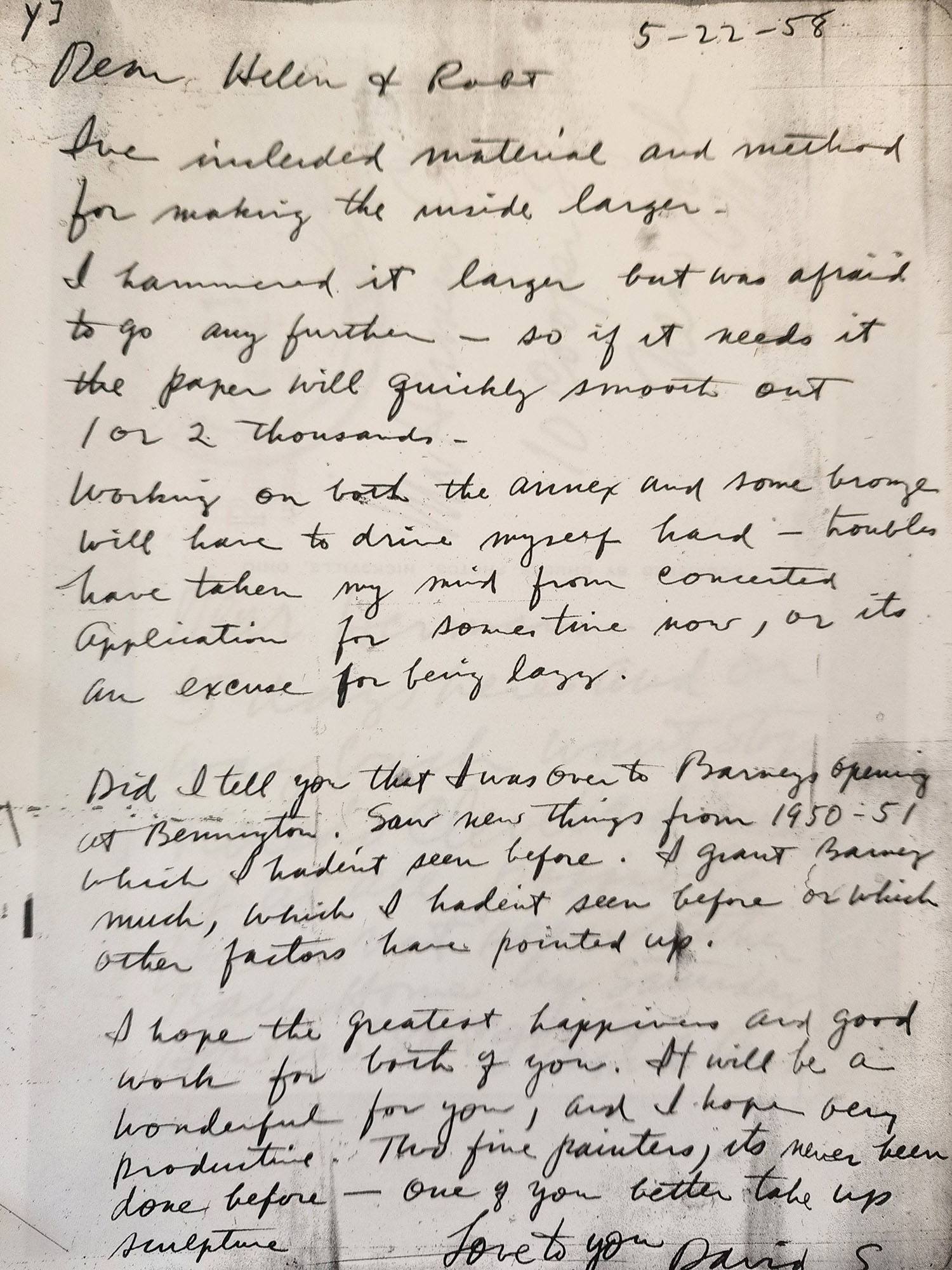
David Smith writes Robert Motherwell and Helen Frankenthaler on the occasion of their marriage, May 1958
I hope the greatest happiness and good work for both of you. It will be a wonderful for you, and I hope very productive. Two fine painters, its never been done before – one of you better take up sculpture.
BOLTON LANDING, NY
In addition to Smith’s visits to New York, Motherwell and Frankenthaler frequently visited Smith in Bolton Landing. The two men’s daughters were around the same age, and enjoyed family occasions together.
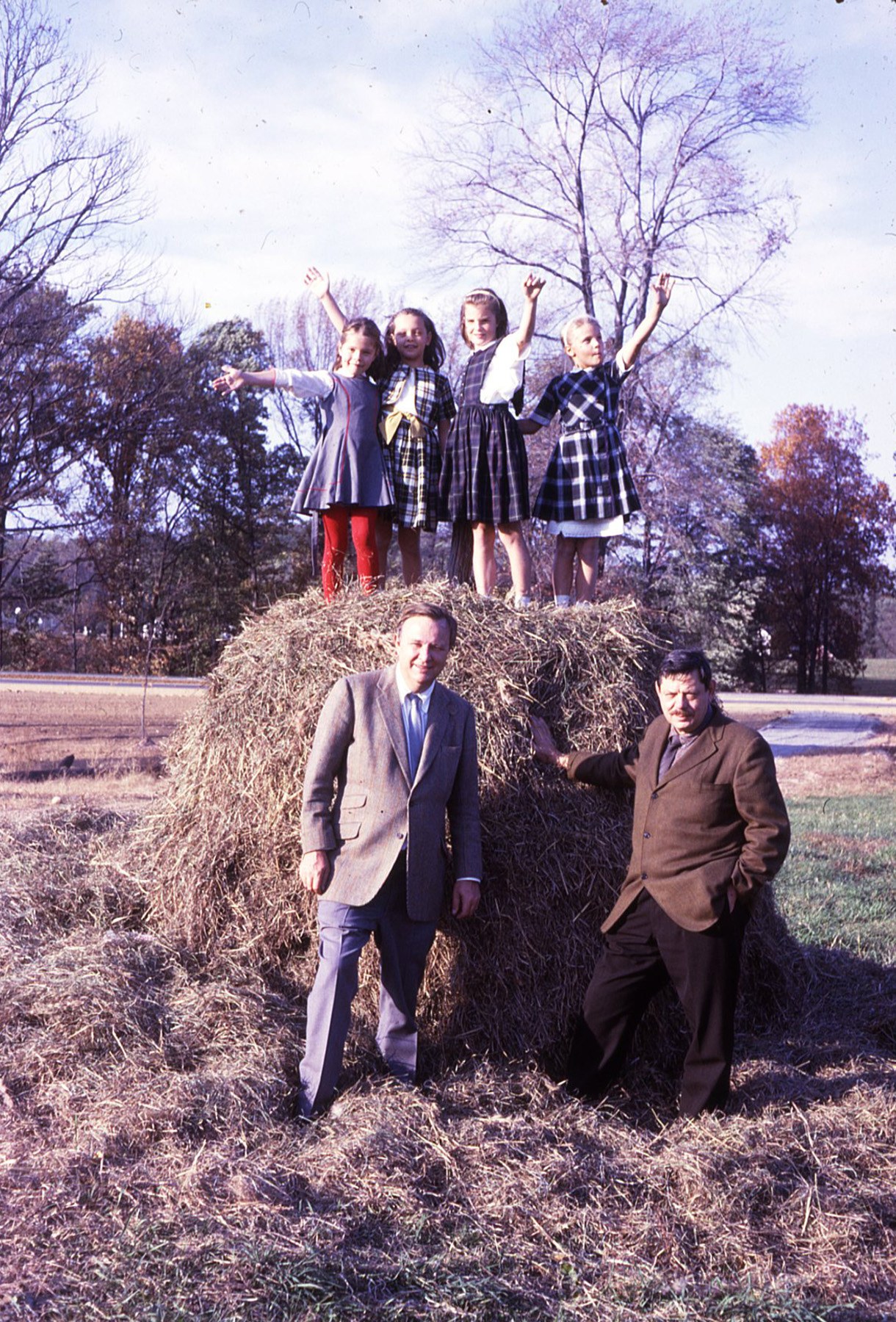
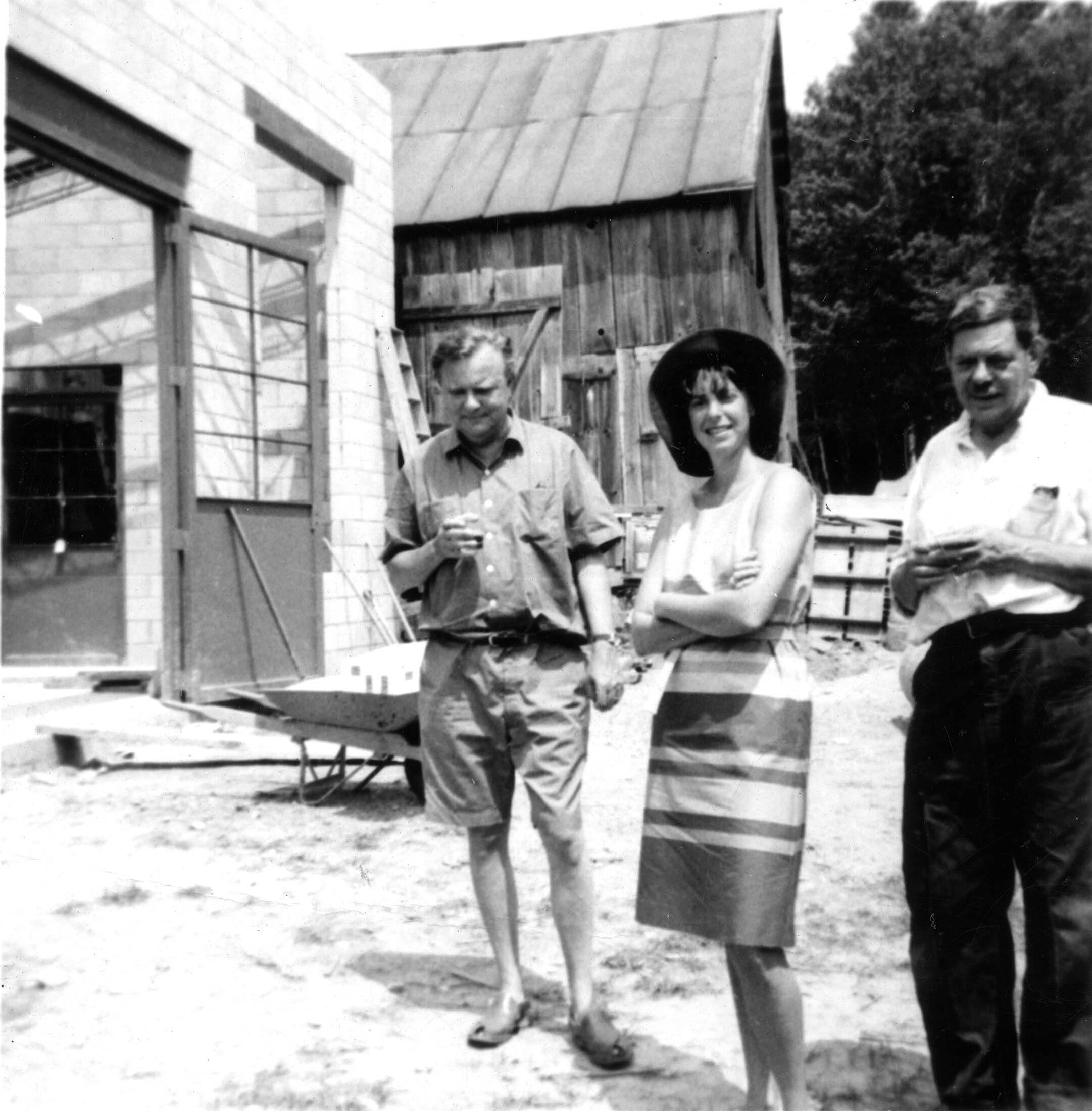
Helen Frankenthaler remarks on a recent visit to Bolton Landing, summer 1957
As usual, thankyou is a silly word to use in showing what I feel re the time at the Smith menage. I feel so good and easy with you all and I know you know it and I want you to know it again. Where else can I stagger around at midnight, my hair awry, big red hips in red slacks, swinging both champagne and Penguin ginger ale bottles?
CAPE COD, MA
Shortly after Motherwell and Frankenthaler were married, they began spending summers in Cape Cod, Massachusetts, where David Smith frequently visited.
Letter from Helen Frankenthaler and Robert Motherwell to David Smith, July 1962
Dear David – Don’t you miss mussels, clams + lobsters? They’re all here. Anyhow, we miss you. Love Bob.
The three artists remained close friends until Smith’s untimely death in an automobile accident on May 23, 1965. Their friendship provided a sense of mutual support, a reinforcement of their ethical and aesthetic values, and something crucial to all artists: a feeling of not being alone in the world.
Robert Motherwell and Helen Frankenthaler reflected on their friendship with David Smith nearly twenty years after his death for the film “David Smith, American Sculptor.”

